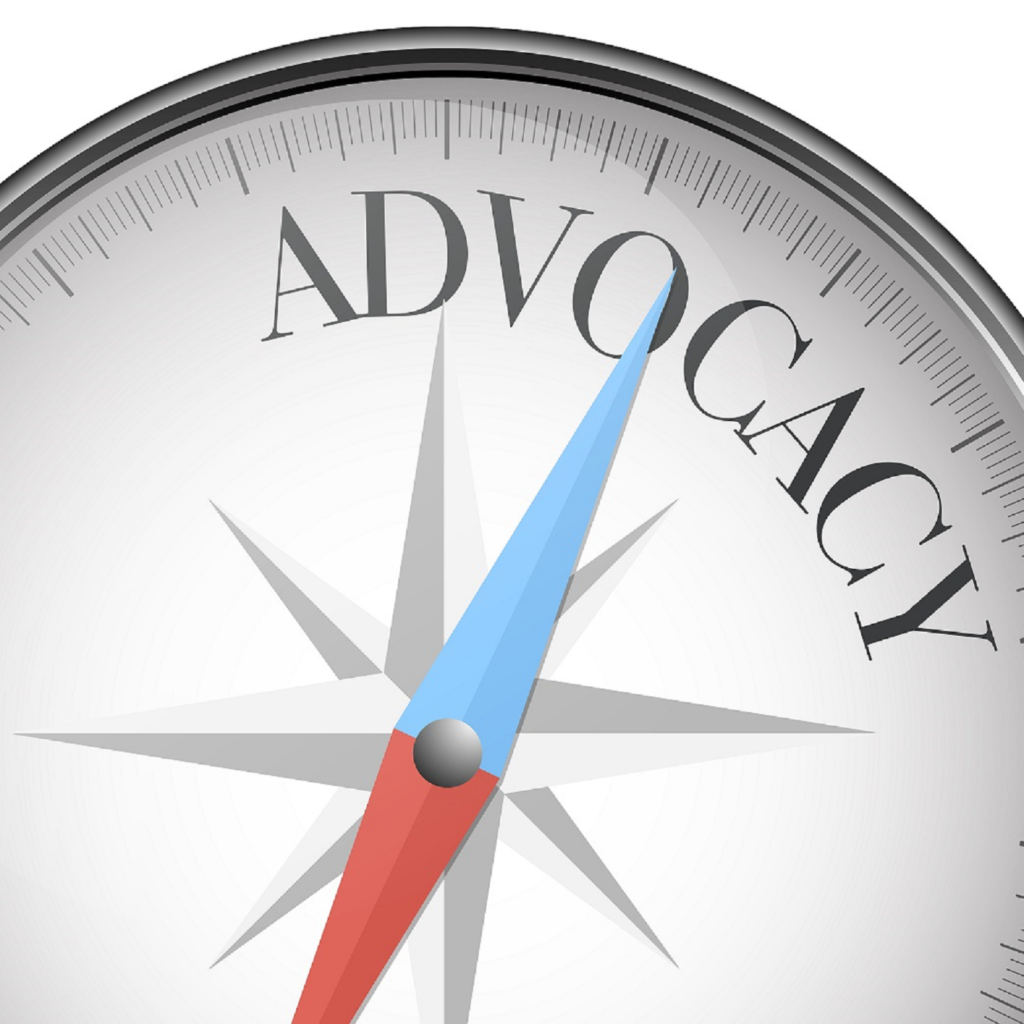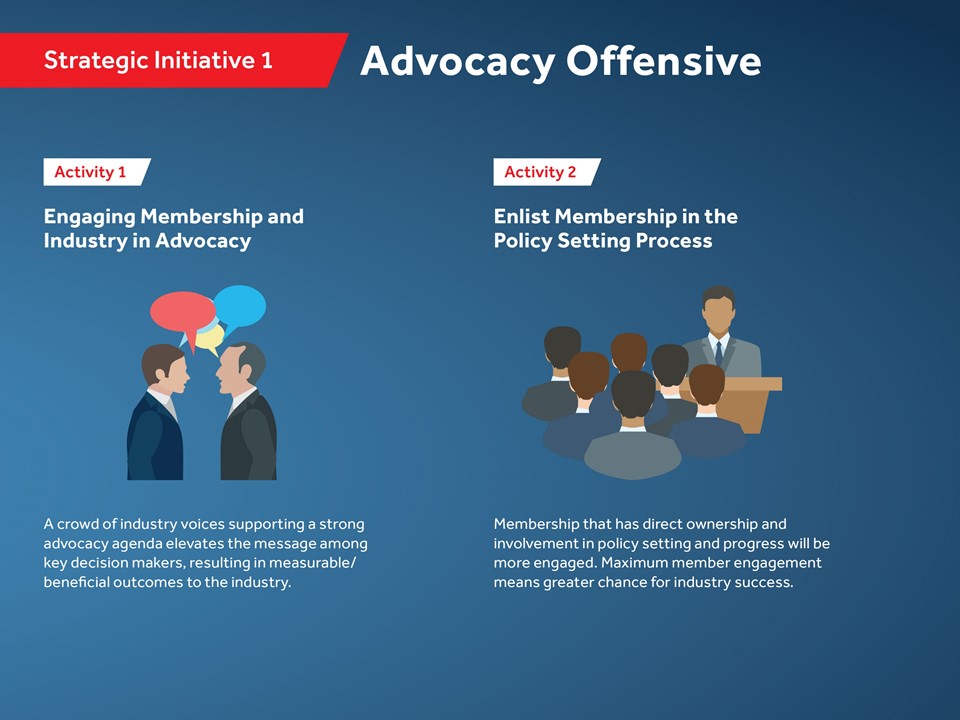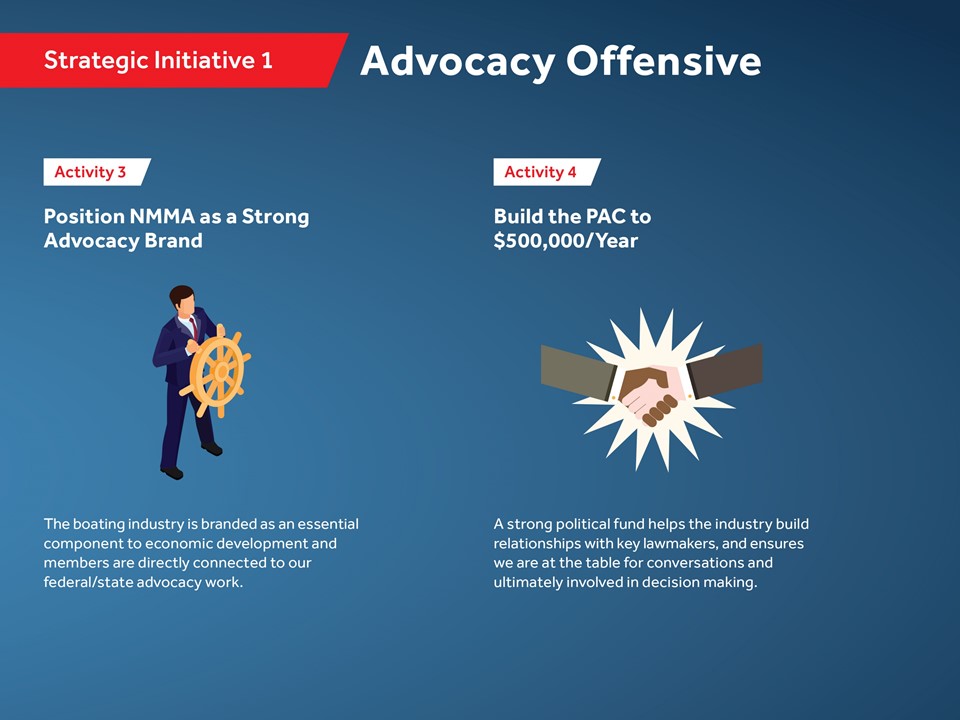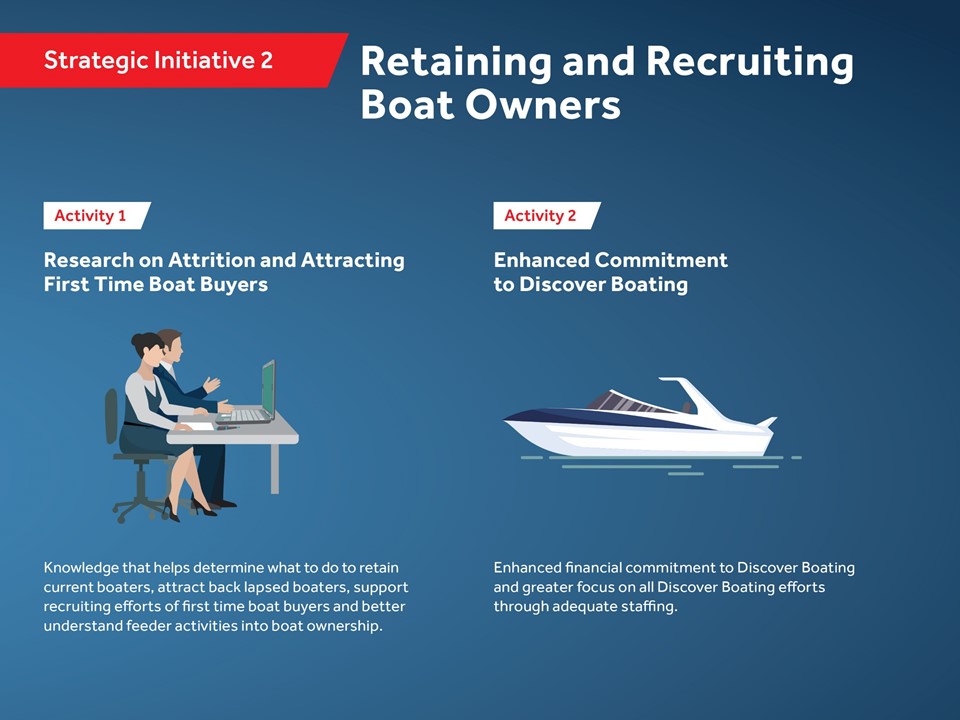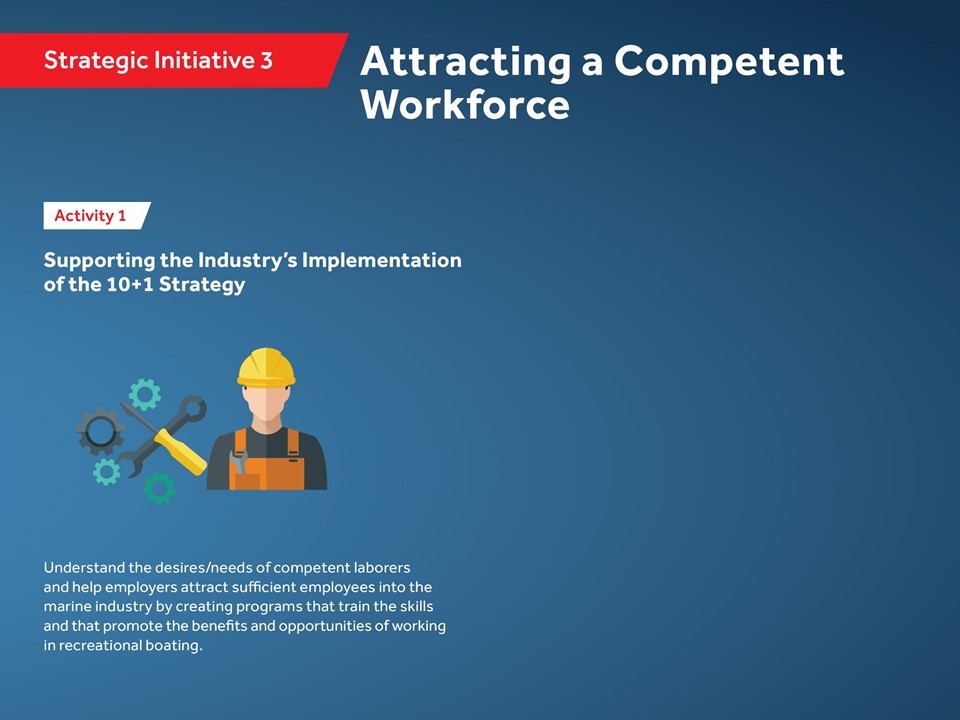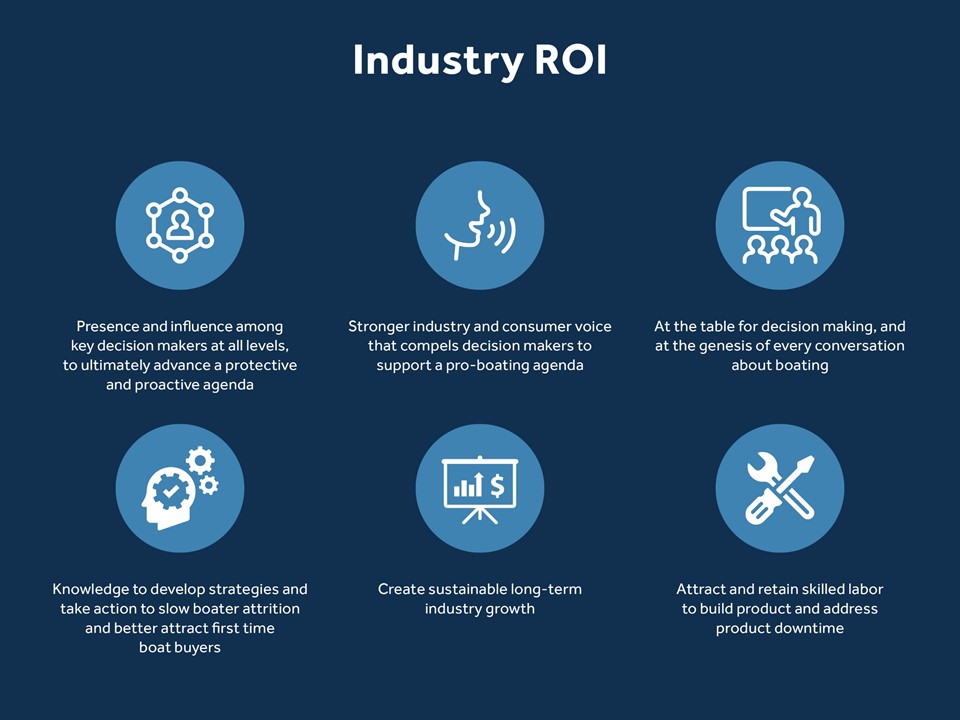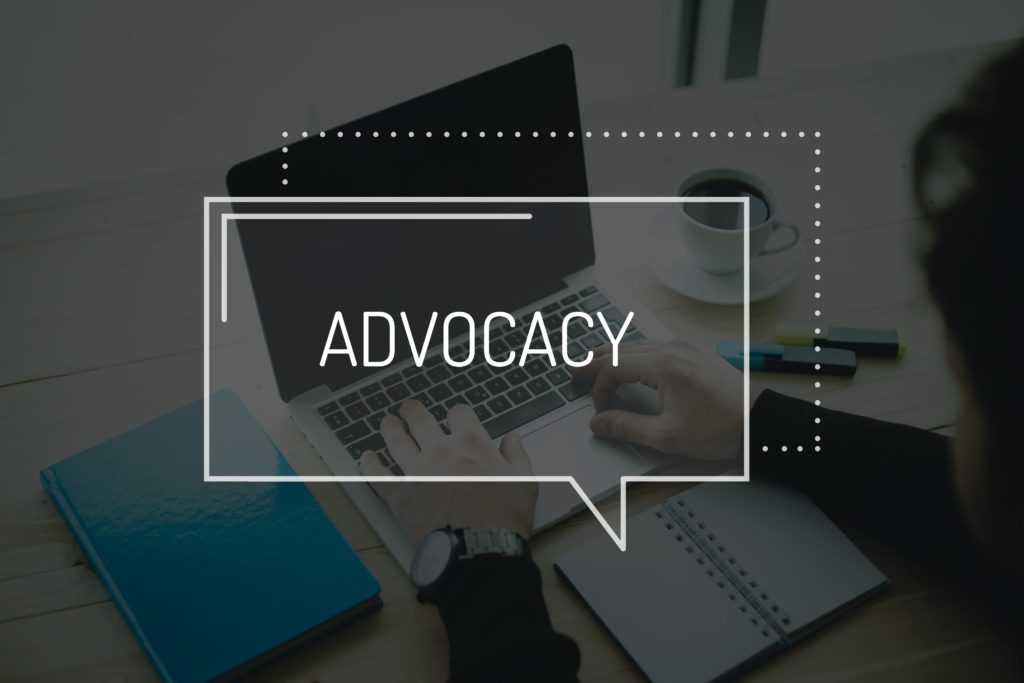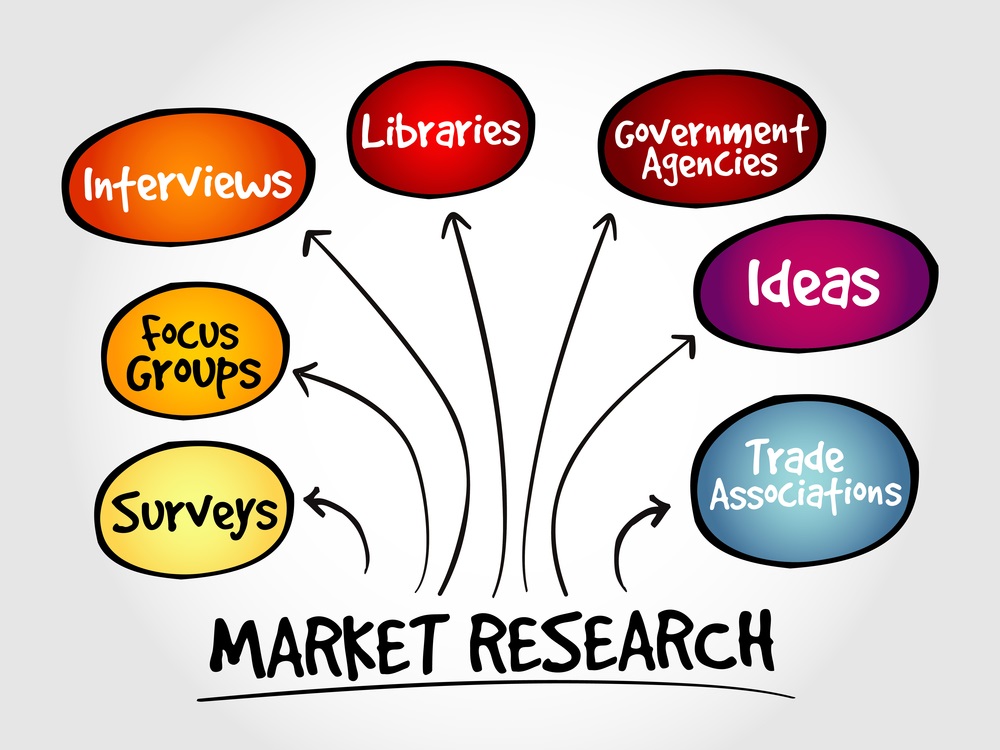 Why Members Hire Associations – Potomac Core Consulting is pleased to announce that its President & CEO, Dan Varroney is being featured in a series of three podcast episodes. The series is part of a re brand of the weekly podcast series by renowned author JP Moery, President & Founder of the Moery Company.
Why Members Hire Associations – Potomac Core Consulting is pleased to announce that its President & CEO, Dan Varroney is being featured in a series of three podcast episodes. The series is part of a re brand of the weekly podcast series by renowned author JP Moery, President & Founder of the Moery Company.
Members Hire Constant Transformation
Late Breaking News. Members Hire Constant Transformation. As Artificial Intelligence, the cloud, and virtual reality take hold, Industries will invest resources in Associations that are equally transformation focused. Despite profitability, Industries are using new technologies to prepare for whatever comes next. As a result, Associations must continually transform themselves if they want to keep pace with members. Part of that shift will be an improved focus on consistently helping Industries solve their biggest problems. A Forbes Insights survey notes that “Enterprises successfully making the transformational shift have plenty of impactful benefits awaiting them.” If Associations make the transformational shift and create commercial synergies that regularly help Industries solve their biggest problems, they too will have ample benefits awaiting them.
In building these new synergies, several Associations are finding themselves stepping far outside of traditional lanes. Existing member benefit and services models are being replaced with a savvy focus helping Industries solve their biggest problems and win in the marketplace. This approach is emerging as the next wave of Association evolution. Executives leading this transformational effort employ an adaptive model with far reaching world views because they:
- See their Associations as market movers – Challenging their own thinking and rapidly embracing opportunities to help members consistently solve their problems.
- Are Data focused – Sharing any new or emerging research insights that might give company owners, executives, entrepreneurs, employees, and investors a window into new and emerging market opportunities.
- Have Fearless implementation in their DNA – Fast moving culture with energized staff in a time of innovation and rapid change.
- Practice Transparent ROI – Frequently seek insights and communicate progress on investments made to grow the Industry with Board members.
 Embracing a new value imperative recognizing that Members Hire Constant Transformation is a large part of what future focused Associations do. And while relevance is necessary for organizational survival, it’s not enough in this disruptive and uncertain era. Some leaders already acknowledge that relevance by itself can’t be a winning strategy in a dynamic business environment. They emphasize a need to evolve past relevance, and in doing so they’re fueled with entrepreneurial spirit, constant transformation, and an organizational thirst for commercial success. They are:
Embracing a new value imperative recognizing that Members Hire Constant Transformation is a large part of what future focused Associations do. And while relevance is necessary for organizational survival, it’s not enough in this disruptive and uncertain era. Some leaders already acknowledge that relevance by itself can’t be a winning strategy in a dynamic business environment. They emphasize a need to evolve past relevance, and in doing so they’re fueled with entrepreneurial spirit, constant transformation, and an organizational thirst for commercial success. They are:
The Global Cold Chain Alliance (GCCA) – This is an Industry helping feed the planet in the midst of a wave of e-Commerce, automation, and increasing food consumption. Imagine a fast paced organization with a fluid portfolio that sees its role as an Industry partner committed to transparent returns on time and money invested as it:
- Positions the Industry with its customers.
- Provides real time workforce solutions.
- Reduces Industry costs.
Through its core partner Trade Associations, the International Association for Refrigerated Warehouses (IARW), the International Refrigerated Transportation Association (IRTA), the World Food Logistics Organization (WLFO), and the Controlled Environment Building Association (CEBA), GCCA consistently steps outside of traditional lanes to help “Grow the Industry and lead the Cold Chain”.
Grow the Industry – Creation of a Cold Chain Index to facilitate Industry growth and mitigate concerns of commoditization. The Index’s return to the Industry is helping to justify price changes with its customers.
Customer Research – GCCA delivered survey insights helping the Industry understand what customers seek. Findings include feedback from 200 food companies in 14 countries. It identified Industry perceptions, including the common reasons work is ceased by food manufacturers and processors.
Talent Recruitment and Development – The Association supports efforts to Recruit Refrigeration Engineers, Partner with Supply Chain programs to Recruit Students at Universities and Colleges and reduce worker turnover by sharing best practices in support of worker on boarding programs. The organization also provides assets helping the Industry attract new workers, including an Industry promotional video “We Are The Cold Chain”, branded by each of the companies for local market worker recruitment.
Disruptive Advocacy – Devising a direct engagement approach with Federal Regulators, individual companies have seen a decrease in the number of violations at OSHA through fines per inspection. Similarly positive results for the Industry were achieved with other key Federal Agencies including the U.S. Environmental Protection Agency (EPA), the U.S. Food and Drug Administration (FDA), the U.S. Department of Energy (DOE), and the U.S. Department of Agriculture (USDA).
Replacing the traditional member benefit and services model – Forming a commercial partnership GCCA is helping the Industry grow, providing resources to attract and keep talent, and Advocacy that reduces costs and increases Industry profitability. These factors acknowledge GCCA’s role as market movers. The organization is also aligned with companies and never hesitates to step outside of traditional lanes to facilitate Industry success. Also, the staff team engages and continually brainstorms new opportunities with its Board. In this environment, Association revenues have grown despite Industry consolidation. Corey Rosenbusch, President & CEO, is working with the Board, and conducting market research to uncover new opportunities to transform again and support Cold Chain growth.
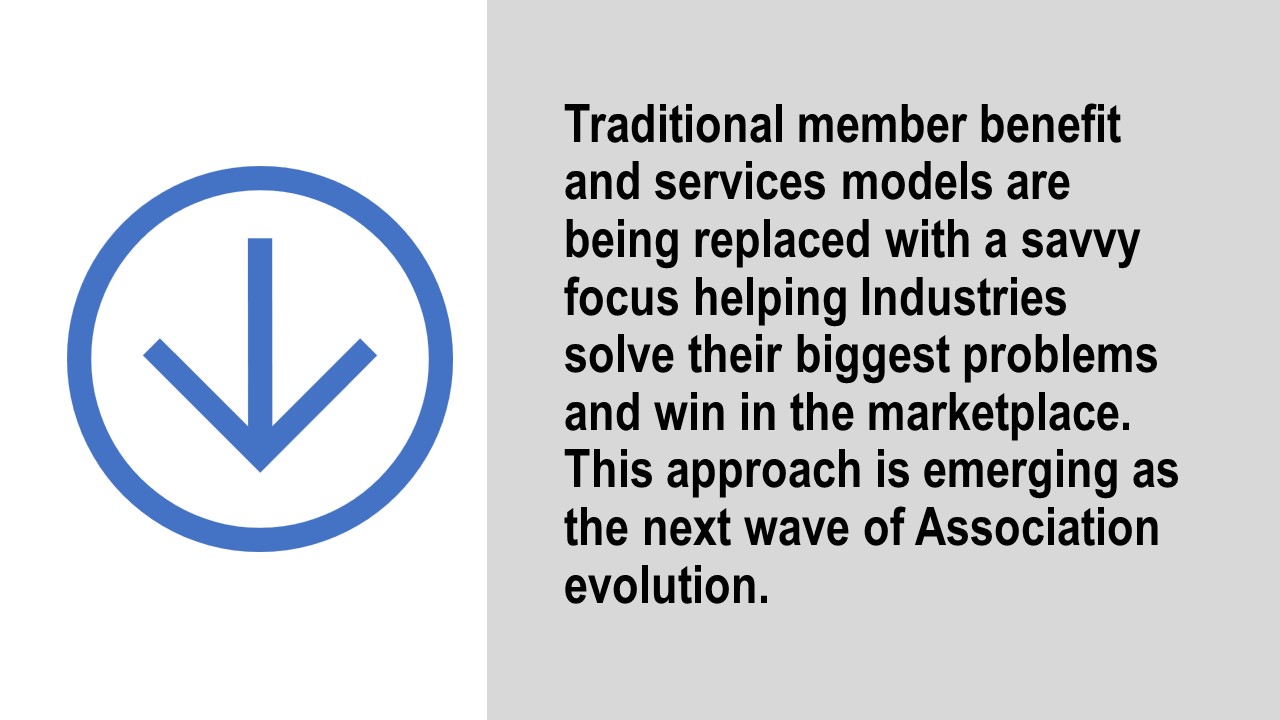 Association for Unmanned Vehicles International (AUVSI) – Incorporating a unique brand of fast moving entrepreneurial transformation, an impressive myriad of Advocacy, insightful research, thought leadership, and engagement, this organization is defining and promoting the future quality of life for current and future generations through Unmanned Systems. With an adaptive market focus, the Association directs resources to advance deployment of Air, Ground, Maritime, and Enabling Technology Systems:
Association for Unmanned Vehicles International (AUVSI) – Incorporating a unique brand of fast moving entrepreneurial transformation, an impressive myriad of Advocacy, insightful research, thought leadership, and engagement, this organization is defining and promoting the future quality of life for current and future generations through Unmanned Systems. With an adaptive market focus, the Association directs resources to advance deployment of Air, Ground, Maritime, and Enabling Technology Systems:
- Advocate to Gain Acceptance – Whether at the federal, state, or local level, the Association utilizes insightful research for stakeholders through its Unmanned Systems & Robotics Database (USRD). This and other research, including the Industry’s economic footprint, helps build acceptance in the regulator and legislator communities. The Board of Directors, Members, & Chapters are part of an engagement juggernaut to advance acceptance of Unmanned Systems. Targeted Advocacy to advance Industry Acceptance in the marketplace is top of Mind. For example:
- Helped the Industry achieve passage of the FAA Reauthorization Act to facilitate extended air operations.
- Works with the Coalition for America’s Future to Advocate for deployment of driverless cars and trucks.
- Serves as the primary Industry representative of the American Bureau of Shipping’s Autonomous Vessel Consortium to advance utilization of Unmanned Maritime vehicles.
- Grow the Industry – Consistently engaging Industry Leaders and the value chain through innovative programming to build and design Unmanned Systems future. The center point of AUVSI’s community building and knowledge sharing is it’s Industry gold standard Trade Show, XPONENTIAL. Annually manufacturers, suppliers, Industry thought leaders, & government officials gather to share progress and surface new opportunities to grow Unmanned Systems.
Replacing the traditional member benefit and services model – Despite persistent headwinds, AUVSI helps a disruptive Industry navigate its pathway to market acceptance. Stepping outside traditional lanes through fearless implementation with an Industry growth focus the Association is helping to deliver business outcomes to a nascent Industry. The organization’s four year revenue and membership growth reinforce its role as market movers. Association President & CEO, Brian Wynne is also collaborating with the Board in a Strategic Industry Planning process. Whatever comes next could help the Industry in its quest to achieve full acceptance of Unmanned Systems in everyday life. By doing so, AUVSI will continue its work in helping Unmanned Systems achieve commercial success.
News Media Alliance (NMA) – In an Industry that prided itself on longstanding profitability, it’s facing enormous challenges from digital transformation. The original business model leveraged its strategic advantages through ownership of the content distribution channel. Digital consumption changed the game and along with it ownership of distribution. While Print remains profitable its declining in the face of a growing digital audience. The way forward is complicated, and this Industry is coming to grips with what happens once print revenues go away. Since new technologies and consumer shifts are constant and there is no accepted strategy for success in the Publishing Industry. Understanding the challenges faced by the Industry and its members, the News Media Alliance transformed itself to help them solve their biggest problems.
The organization’s transformation is based on moving away from a limited, government advocacy model and strategically reshaping its role as market mover in a highly disrupted Industry:
- Advocate to Improve the Industry’s Competitive Position – Since content distribution is controlled by Facebook and Google, the Alliance helping Publishers level the playing field, allowing news publishers to collectively negotiate and withhold content as leverage for better terms and conditions through the “Journalism and Competition Preservation Act of 2018.”
- Growing the Industry –
- Implementing a “Digital Dialogue” – With Google, Facebook, and Amazon to help deliver both traffic and revenue back to the news media Industry.
- Conducting important research to help the Industry understand more about their audience, i.e. how they want to consume information and identify possible strategies that could be helpful in the changing advertising market.
- Releasing an “Advertising Panorama” providing a comprehensive look at the news audience and how marketers can reach them.
Replacing the traditional member benefit and services model – In its departure from the traditional model, the Alliance is on the leading edge of change. With clear eyes it reshaped the organization’s focus including shutting down the Trade Show. Recognizing that the Industry’s challenges are more commercial than political, Advocacy is just one part of its market positioning. Its larger role nowadays is staying close to the Industry, understanding, delivering, and helping the Industry overcome its challenges and restoring it to a stronger and more profitable footing. Membership is growing as the Industry views the Alliance as its partner in constant transformation. David Chavern, President & CEO notes “we’re energized with our role in building tools to help the Industry win commercially.”
Members Hire Constant Transformation
In an era of constant transformation, Association leaders should radically shift their focus to helping Industries achieve commercial success. JP Moery, President, The Moery Company, and author of Association Hustle – Top Strategies for Association Growth, emphasizes that these Associations are thriving because “Each understands that Association survival is driven by entrepreneurism, willingness to pivot, and their ability to adopt innovative strategies that help their members succeed.”
Letting go of the member benefit and services model is increasingly a given, especially when Members hire constant transformation. Association Executives from the Global Cold Chain Alliance, Association for Unmanned Vehicles, and the News Media Alliance are adopting the transformational and commercial success formula, and they are getting traction because they:
- See their Associations as market movers – Challenging their own thinking and rapidly embracing opportunities to help members consistently solve their problems.
- Are Data focused – Sharing any new or emerging research insights that might give company owners, executives, entrepreneurs, employees, and investors a window into new and emerging market opportunities.
- Have Fearless implementation in their DNA – Fast moving culture with energized staff in a time of innovation and rapid change.
- Practice Transparent ROI – Frequently seek insights and communicate progress on investments made to grow the Industry with Board members.
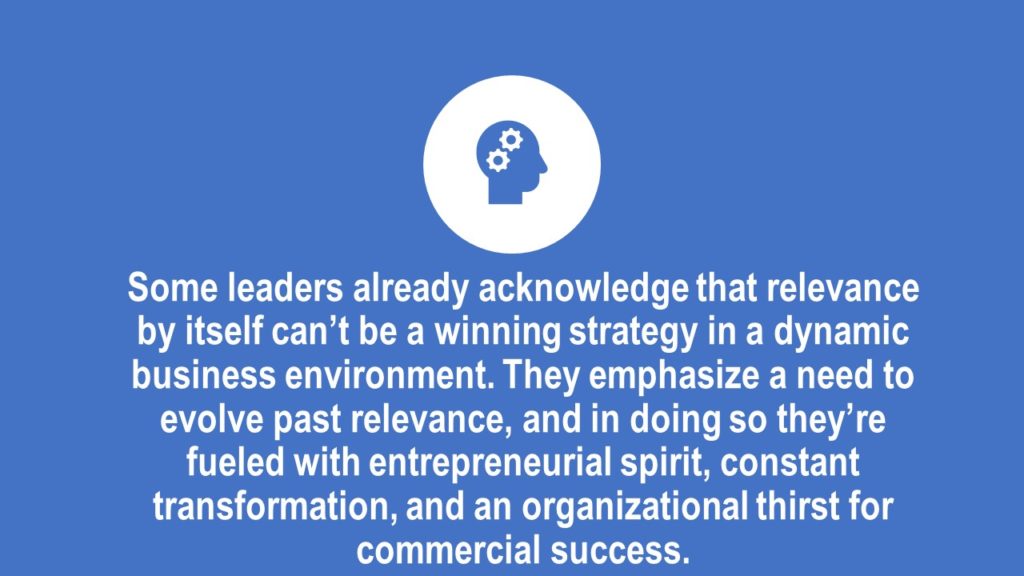 Philosopher Arthur Schopenhauer observed that “Truth Passes Through Three Stages: First, It Is Ridiculed. Second, It Is Violently Opposed. Third, It Is Accepted as Self-Evident.” Late Breaking News. For Associations, tomorrow’s world is here today, Members hire constant transformation.
Philosopher Arthur Schopenhauer observed that “Truth Passes Through Three Stages: First, It Is Ridiculed. Second, It Is Violently Opposed. Third, It Is Accepted as Self-Evident.” Late Breaking News. For Associations, tomorrow’s world is here today, Members hire constant transformation.
To learn more about how your organization can constantly transform click here.
Members Hire Tomorrow’s Associations

Breaking. Members Hire Tomorrow’s Associations because they have no other choice. Global uncertainty and technological advances are forcing Members to make more informed decisions on how to spend their precious time and money. Members expect their Associations to be nimble, future focused, and having the speed and foresight to help move an Industry forward. Organizations recognizing this shift are transforming from yesterday’s Associations to Tomorrow’s Associations.
Members hire Tomorrow’s Associations because they sit at the cutting edge of change and:
- In a time of political gridlock, they are perceived as increasing spheres of influence. They’re also transforming themselves into more potent and influential extensions of an Industry.
- Utilize market research to pinpoint challenges and build strategic opportunities to overcome those challenges. In doing so, they help create a more favorable climate to drive Industry growth.
- Relentlessly look for whatever comes next in their Industry.
- Seamlessly move from yesterday’s challenge toward tomorrow’s opportunity.
- See their organizations as the front line and last line of defense for an Industry.
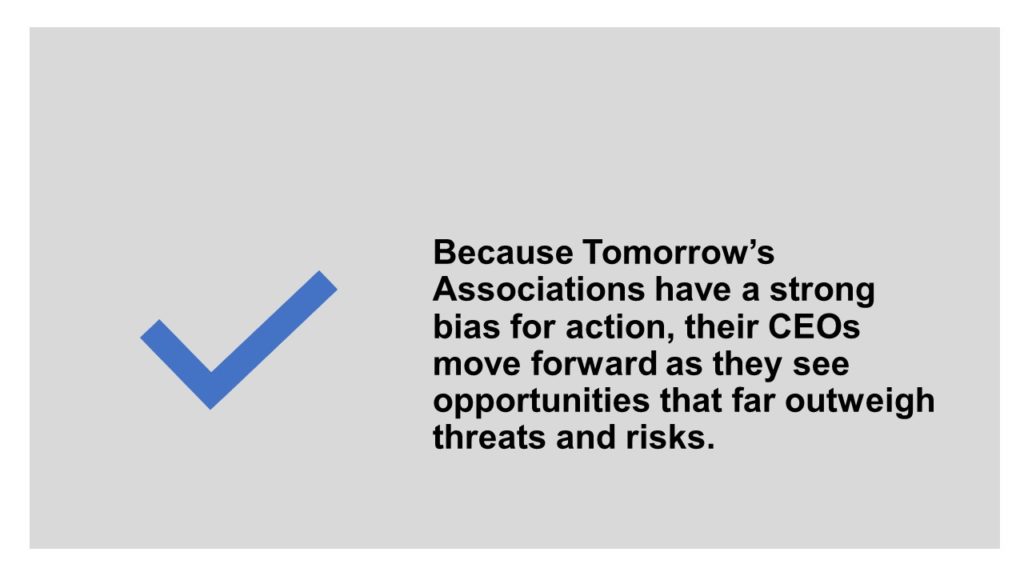 Using relevance as their foundation, these organizations conduct research and engage boards and members to identify and address the next set of Industry challenges. They also understand the Industry’s business model from product design to marketplace, and the staff teams approach everyday as an act of invention:
Using relevance as their foundation, these organizations conduct research and engage boards and members to identify and address the next set of Industry challenges. They also understand the Industry’s business model from product design to marketplace, and the staff teams approach everyday as an act of invention:
Helicopter Association International – Keeping the rotors turning is all that matters for HAI. Led by Matt Zucarro, an Industry veteran, and President & CEO, the Association relishes its role as the Industry’s advocate in chief. “We don’t let anything get past us” notes Zucarro as his experienced team is ready to address any market or regulatory obstacle that will prevent the rotors from turning. Simultaneously, they aggressively promote the economic value of the Industry in meetings with legislators and regulators in domestic and international markets. The Association remains closely connected to Industry trends through insightful research and direct Board engagement.
Since 2005, the Association transformed itself into a well-capitalized, forward looking, and fast moving extension of the Industry. Implementing a strong bias for Industry growth, HAI annually conducts the world’s largest helicopter exposition, the HAI Heli Expo Trade show which includes business networking and technical resources that address Member business challenges and opportunities. In addition to the Trade Show, the Association delivers resources geared toward helping Members address flight and operational safety with an Aircraft Risk Assessment Tool and a Safety Accreditation Program.
The Advocacy program is the first and last line of defense for the Industry. When the FAA (Federal Aviation Administration) grounded operators due to a technical revised interpretation of regulations, HAI and their members worked successfully to speed up and streamline the exemption process. In doing so, the Industry was able to get back to work.
While addressing today’s challenges, Zucarro and his team are helping to position the Industry for the future:
- “Autonomous flight is coming, technology is going to allow it, it’s a matter of public acceptance.” HAI is working with Federal Agencies and other Associations including the Association of Unmanned Vehicles (AUVSI) to help define the future through unmanned flight.
- Although workforce shortages plague the Helicopter Industry now, the HAI team is collaborating with the Industry to build the Industry’s workforce of the future. Concrete strategies are being developed through the Helicopter Foundation to promote careers and help lead more pilots and technicians to choose careers in the Industry.
The International Sign Association – Annual Strategic Planning with its Board and 3 Steering Committees plus ongoing market engagement keep the Association aligned with the present and the future. Insisting upon transparency, the ISA team shares progress reports with Board Members four times each year. This level of market research plus Industry focused surveys, keeps the Association connected to today’s and tomorrow’s “Up at Night” challenges.
Led by Lori Anderson, President & CEO, the organization delivers business value in measurable ways:
- The International Sign Expo – Business to business networking and emerging technologies.
- Actionable Industry Research – Quarterly economic reports, wages and benefits surveys, and research that identifies the economic impact of a sign.
- Local sign code guidance – Plus legal support to help the Industry achieve sign approval.
Starting in 2013, the workforce shortage topic continually appeared in ISA’s research. Since then, utilizing an innovative digital approach, the Association is working to help the Industry educate, attract, and retain workers. Through strategic partnerships and adding skilled staff, the Association created a platform to help assess and teach skills to current and prospective workers. Though this online learning platform candidates can earn up to 15 digital badges. The strategy, since 2015, has helped students achieve approximately 7,000 badges. The workforce program is continually evaluated and updated to support the Industry’s workforce needs.
ISA also leverages its “Sign Manufacturing Day” to create student awareness of the Industry. Starting with just 8 companies and 200 students, the program now has eighty four companies participating and 3,500 students. Lori Anderson notes that “these programs help companies recruit interns on the spot.”
Health Industry Distributors Association – Leading and convening all aspects of the Industry in a Healthcare Supply Chain Collaborative. CEOs from Distributor Companies gather at HIDA to utilize this cooperative platform, brainstorm, and develop strategic solutions that optimize supply chain efficiency. The organization also incorporates Manufacturers in its market focused efforts through the HIDA Educational Foundation.
The Association is also familiar with Industry’s products and business model. Understanding member pain points through direct engagement and market research, the organization evolves as market place challenges and opportunities change.
It’s current suite of products are designed to help members stay connected to what’s new or anticipated in their marketplace: Business Intelligence on Supply Chain Strategies, Telemedicine, Market Reports, & Segmented market reports.
Through Industry focused Advocacy:
- The Association is collaborating with federal agencies to provide help during an emergency event. This will help federal emergency responders engage the commercial healthcare supply chain during crisis by centralizing key attributes of commercial medical-surgical distribution centers in an online tool.
- Successfully had 120 products manufactured in China exempted from additional import tariffs.
Matthew J. Rowan, President & CEO leads the Association.
Transforming into one of tomorrow’s Associations is no small task. Each Industry or Profession is different and making big changes could take more time. Consider starting with actionable market research and collaborative board discussions. Doing so will help build a foundation that leads to the larger transformation. For example, Alison Bodor, President and CEO, American Frozen Food Institute is leading a longer term change. Along with her team, she continually utilizes market research to inform and guide strategic discussions around food safety and Frozen Food consumption with the Board and their members. One of the near term deliverables is a new research report by AFFI and the Food Marketing Institute (FMI) titled “The Power of Frozen.” The report examines consumption drivers, purchase drivers, channel drivers, opportunities for collaboration, and shares opportunities for how companies can drive continued growth in the Frozen Food category. Thoughtful approaches like AFFI’s plant the seeds of transformational change.
Members Hire Tomorrow’s Associations
 Tomorrow’s Associations including Helicopter Association International, Health Industry Distributors Association, International Sign Association, and other leading organizations including, Global Cold Chain Alliance, American Bakers Association, and the National Marine Manufacturers Association are all unapologetically getting it done for their Industries as they:
Tomorrow’s Associations including Helicopter Association International, Health Industry Distributors Association, International Sign Association, and other leading organizations including, Global Cold Chain Alliance, American Bakers Association, and the National Marine Manufacturers Association are all unapologetically getting it done for their Industries as they:
- Leverage actionable research to position Industries for new opportunities.
- Advance the innovative aspects of products to elected officials and consumers.
- Champion Industries and position them for Market Growth.
- Promote the economic impact of Industry products and services to domestic and international legislative and regulatory bodies.
- Cite how Industries increase employment and influence community quality of life, and in several cases, help to attract the next generation of workers.
Because Tomorrow’s Associations have a strong bias for action, their CEOs move forward as they see opportunities that far outweigh threats and risks. “Turn every threat into an opportunity. In order to do that you need to surround yourselves with the right talent. Take some risk in a period of uncertainty not avoid it” notes PWC’s CEO Bob Moritz. Yes, uncertainty should be an immediate call to action for yesterday’s Associations. Breaking. Members Hire Tomorrow’s Associations because they have no other choice.
To learn more about how your organization can become one of Tomorrow’s Associations click here.
Members Hire Relevant Associations
 Associations have endured downturns before, what’s different this time is the valuable lesson learned after the great recession, that Members hire relevant Associations. Boards and their CEOs aren’t interested in hemorrhaging balance sheets that come from dues losses and shrinking Trade Show revenues. Regardless of the economic climate, organizations are committed to keeping their organizations relevant. From 2009 forward, leading Associations find ways to maintain their relevance and are perceived as the Industry or the Profession. If a global downturn occurs, Associations should prepare and conduct a rigorous and research driven relevance test.
Associations have endured downturns before, what’s different this time is the valuable lesson learned after the great recession, that Members hire relevant Associations. Boards and their CEOs aren’t interested in hemorrhaging balance sheets that come from dues losses and shrinking Trade Show revenues. Regardless of the economic climate, organizations are committed to keeping their organizations relevant. From 2009 forward, leading Associations find ways to maintain their relevance and are perceived as the Industry or the Profession. If a global downturn occurs, Associations should prepare and conduct a rigorous and research driven relevance test.
Associations who want to pass the relevance test should initiate conversations with their Boards or Executive Committees to:
- Talk through and quantify the sources and the business impact of market challenges.
- Brainstorm with leaders on how the Association can be helpful in a strategic manner that benefits the entire Industry or Profession.
- Build nimble strategies to address new or critical Industry or Professional challenges and opportunities.
- Develop metrics and key performance indicators with Board leaders to measure how relevant your Association is to the member’s marketplace.
- Report back regularly on how aligned the Association is with these metrics and key performance indicators at Board meetings.
- Have ongoing strategic conversations about Industry or Professional challenges and opportunities.
 Relevance is about being connected to the member marketplace with resources geared toward helping your members overcome challenges & achieve success. Associations who utilize this approach understand that Members hire relevant Associations, which means these organizations are built to withstand downturns and thrive during healthy economies. What makes these Associations especially relevant is how their strategies and products position them as either “Industry or Profession solution partners” with their Boards and members:
Relevance is about being connected to the member marketplace with resources geared toward helping your members overcome challenges & achieve success. Associations who utilize this approach understand that Members hire relevant Associations, which means these organizations are built to withstand downturns and thrive during healthy economies. What makes these Associations especially relevant is how their strategies and products position them as either “Industry or Profession solution partners” with their Boards and members:
The Aluminum Association – Heidi Biggs Brock, President and CEO, works with her team to continually refine the organizations focus and stay connected with the Aluminum Industry’s evolving challenges and business outcomes. The Association utilizes actionable data to brainstorm with Executive Committee members about current emerging challenges to ensure that they are focused on quantifiable outcomes that move the needle for the Industry. The strategies that the organization develops have Key Performance Indicators and are reported through a Scorecard in the Aluminum Association’s Annual Report.
National Association of Independent Schools – Provides services to more than 1,800 schools and associations of schools in the United States and abroad, including more than 1,500 independent private K-12 schools in the U.S. In formulating its strategies, NAIS embraced an underlying premise that in today’s marketplace “people no longer buy products or services. Instead they hire them to make progress.” Based on the Clayton M. Christiansen “Jobs To Be Done” approach in his more recent book Competing Against Luck, the NAIS team utilized this approach to develop value propositions that addressed the struggles that heads of schools and administrators face and to understand how those struggles change as they progress through their careers. The Association is led by its President Donna Orem.
American Cleaning Institute – The organization is positioned to help its members overcome challenges and find pathways to business growth through each of the following Industry focused strategies:
- Thought leadership and Industry promotion.
- ACI Annual Convention that provides opportunities for the Industry to market and sell products. The most recent Convention had record setting attendance.
- Industry centered Advocacy to help members protect their intellectual property and product category reputation.
The organization’s President & CEO, Melissa Hockstad, engages members on a regular basis as part of an organizational “listen in” program and connects with her Board to surface any new opportunities to support Industry growth.
The Smart Electric Power Alliance’s key focus is to bring all distributed energy resources to the conversation in order to develop, share, and build practical solutions for the entire Industry. The membership comprises utilities, large energy users, as well as for-profit and non-profit corporations and SEPA’s overall focus is on grid modernization. The Alliance conducts Industry focused Board meetings where executives share knowledge, address Industry challenges and devise solutions. In addition, the Alliance provides unbiased and actionable research and Advisory Services to Utilities to help them address the challenges of a clean energy landscape. Led by Julia Hamm, the organization’s President and CEO, the Alliance maintains its neutrality, does not advocate or take positions on issues, drive trends, or pick favorites.
Each organization’s Industry or Profession focused approached positioned them for a possible downturn because they understand that Members hire relevant Associations.
Members Hire Relevant Associations
As Associations think through a possible global slowdown, the 22nd PWC Annual Global CEO survey provides insights that could be beneficial in the rigorous relevance test that you are about to conduct. The survey reveals that in 2019:
- Data about customers and clients needs and preferences is viewed as critically important in CEO decision making.
- 436% increase in the number of CEOs who expect global economic growth to decline.
- 16% decrease in CEOs who say they are “very confident” in revenue prospects for the next 12 months.
- Some of the top ten threats include: over regulation, policy uncertainty, availability of key skills, trade conflicts, cyber threats, geopolitical uncertainty, protectionism, populism, speed of technological change, and exchange rate volatility.
- CEOs seeking growth will pivot inward to drive revenue growth and focus on operational efficiencies, launch a new product or service, enter a new market, new mergers and acquisition opportunities, collaborate with entrepreneurs or startups, or sell a business.
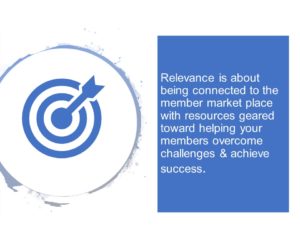 Strong U.S. economic performance shouldn’t shield concerns voiced by global CEOs who in many cases are Association dues decision makers. Reinforcing these results is the monthly Wall Street Journal Small Business Survey conducted by Vistage. Of those surveyed, 14% expect the economy to improve while 36% expect it to worsen among owners of firms with revenues ranging between $1 and $20 million. The PWC and Wall Street Journal surveys introduce new information that should be the impetus for your organization to conduct a rigorous relevance test soon. Waiting only adds to your Association’s risk, the timing to transform your organization into an Industry or Professional Solution Partner is immediate. Note to self: Members hire relevant Associations.
Strong U.S. economic performance shouldn’t shield concerns voiced by global CEOs who in many cases are Association dues decision makers. Reinforcing these results is the monthly Wall Street Journal Small Business Survey conducted by Vistage. Of those surveyed, 14% expect the economy to improve while 36% expect it to worsen among owners of firms with revenues ranging between $1 and $20 million. The PWC and Wall Street Journal surveys introduce new information that should be the impetus for your organization to conduct a rigorous relevance test soon. Waiting only adds to your Association’s risk, the timing to transform your organization into an Industry or Professional Solution Partner is immediate. Note to self: Members hire relevant Associations.
To learn more about how your organization can become a relevant Association click here.
Members Hire Industry Advocacy and Promotion
Since Executives are under constant pressure to produce results, it’s a safe bet they’re not looking for another business trip or a meeting to attend. What they are looking for are opportunities to address their company’s challenges and help position their Industry for growth. As Associations ponder their future strategies, the message is clear: Members hire industry advocacy and promotion.
Organizations who embrace the mantra that Members hire Industry advocacy and promotion are doing well. For example, the Global Cold Chain Alliance led efforts to achieve a decrease in the number of violations and OSHA fines per inspection. As part of the organization’s broader Industry promotion strategy, the organization recently released customer survey research and also produced the video, “We Are the Cold Chain”. This is helping the Industry position itself with its global customer base. GCCA is just one textbook case, several other organizations, including the American Bakers Association, the Association for Print Technologies, the American Staffing Association, and Jewelers of America are utilizing similar strategies.
Since Members hire Industry advocacy and promotion, the most successful organizations know how important it is to stay aligned with the Industries they serve. NMMA (National Marine Manufacturers Association) is a highly respected organization. With annual revenues reaching $66 million and a slate of offerings that align with their member’s challenges and outcomes, they pursued an opportunity to check in with their members through a Strategic Industry Business Planning process.
Led by Thom Dammrich, President and CEO, NMMA is inextricably linked with the Recreational Boating Industry. He consistently emphasizes “NMMA is the Industry, we don’t exist apart.” Over his twenty year tenure, Dammrich and his team utilized this strategic approach to achieve an Industry symmetry and build a launching pad to consistently move the needle for the Recreational Boating Industry. Offerings that reflect the Industry approach includes advocacy, Industry promotion, consumer boat shows, market research, and a trade show. Each aligns with protecting and promoting the Industry:
- Advocacy is already a key NMMA deliverable; their policy and regulatory work connects to Industry business challenges.
- In 2006, a Grow Boating Initiative was launched to raise consumer awareness, connect the Industry with prospective boaters, and to enhance the Boating Experience.
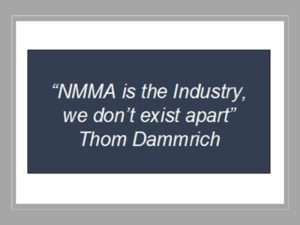 The organization also collaborated through the Outdoor Recreation Industry Roundtable to achieve recognition for the Industry’s contribution to the U.S. Economy. Outdoor Recreation’s contribution is now regularly reported by the Bureau of Economic Analysis and the Department of Commerce. This recognition was announced in February 2018 and reflects years’ long work by all the Associations participating in the Outdoor Recreation Roundtable.
The organization also collaborated through the Outdoor Recreation Industry Roundtable to achieve recognition for the Industry’s contribution to the U.S. Economy. Outdoor Recreation’s contribution is now regularly reported by the Bureau of Economic Analysis and the Department of Commerce. This recognition was announced in February 2018 and reflects years’ long work by all the Associations participating in the Outdoor Recreation Roundtable.
In October of 2017, the Board of Directors, the Executive Committee, a Board Task Force, and members of the Staff Leadership team launched their Strategic Industry Business Planning process. Thom Dammrich appointed Robert Newsome, Senior Vice President, Strategy, Engineering Standards & Membership to shepherd this important yearlong effort for NMMA. He coordinated an extensive process including: Board interviews, extensive Industry impact and engagement research and analysis, Task Force & Executive Committee consensus, and collaboration with the Association’s internal leadership team.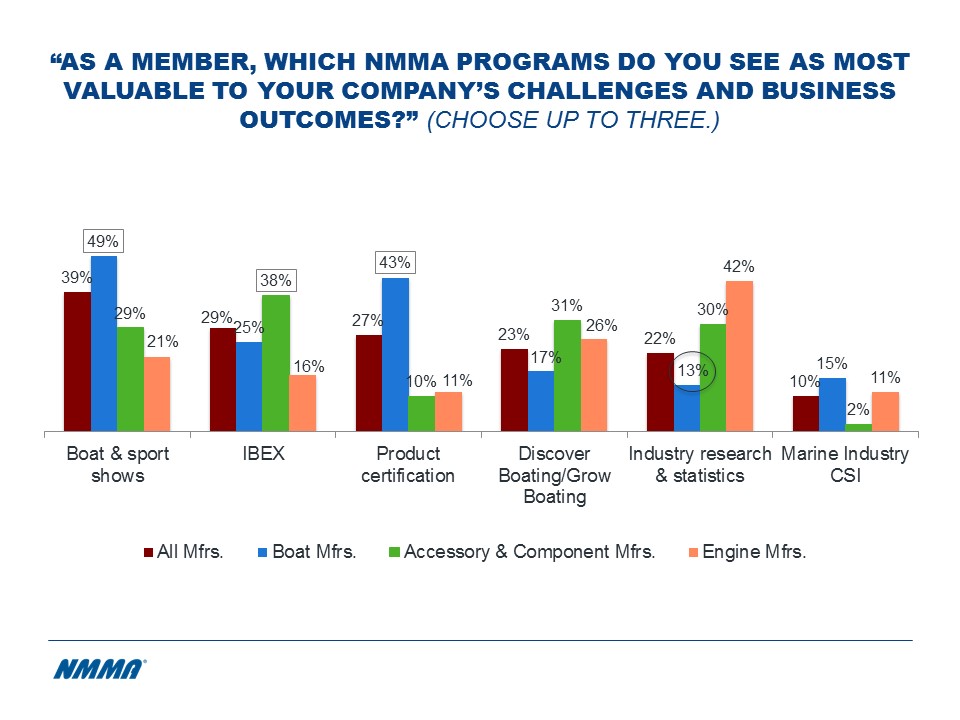 NMMA utilized survey research to understand its alignment with the Industry’s ”up-at-night” challenges and desired business outcomes. Part of that Industry alignment is reflected in several of the existing Association’s offerings:
NMMA utilized survey research to understand its alignment with the Industry’s ”up-at-night” challenges and desired business outcomes. Part of that Industry alignment is reflected in several of the existing Association’s offerings:
- Advocacy – Protecting marine businesses
- Engineering Standards – Helping manufacturers provide safer products
- Industry Research and Statistics – Timely data & insights to guide decision making
- Boat Shows – Connecting the Industry with the boating consumer
- Trade Events – Helping members generate sales, reach new markets & improve marine products
- CSI – Continuous improvement to drive boater satisfaction
- Communications – Maintaining a positive reputation for boating
- Export Development – Expanding access to overseas markets
- Grow Boating – Attracting the next generation of boat owners
Research Surfaces Additional Business Impact Opportunities 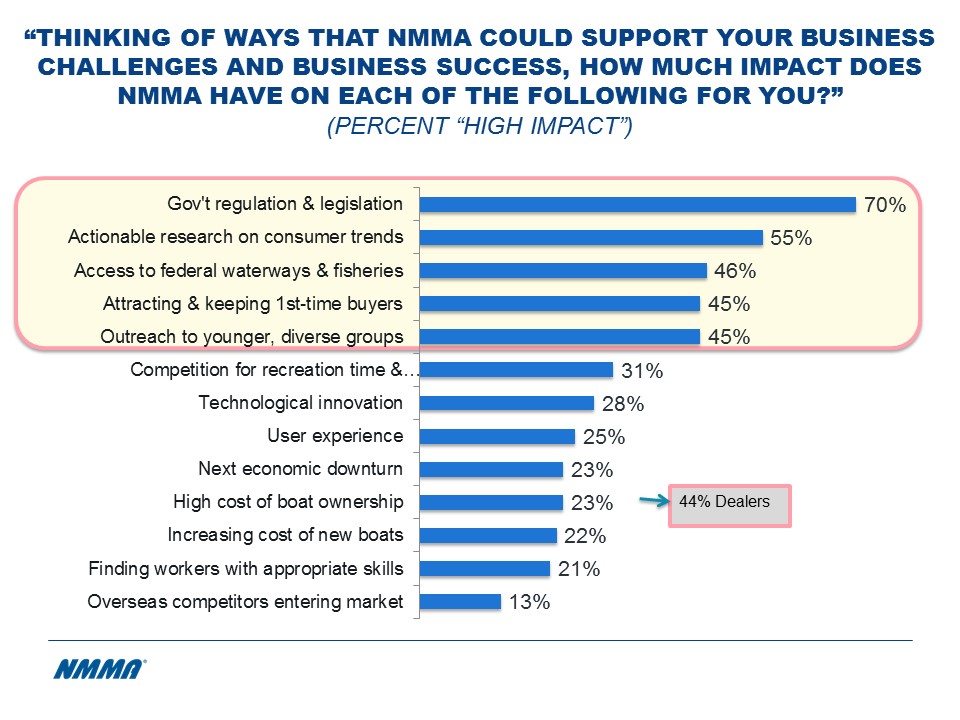 The Task Force and Staff Leadership teams identified additional New Strategic Ideas to reinforce “NMMA is the Industry, we don’t exist apart” strategy and provide increased support for the Industry:
The Task Force and Staff Leadership teams identified additional New Strategic Ideas to reinforce “NMMA is the Industry, we don’t exist apart” strategy and provide increased support for the Industry:
- Advocacy Offensive – Elevate NMMA’s presence and influence among key decision makers at the federal, state, local and international levels, to ultimately advance a protective and proactive agenda.
- Retaining and Recruiting Boat Owners through focused Research & Industry Promotion:
- The industry is well informed on the factors that lead to boater attrition and thus able to develop strategies and take action to slow boater attrition.
- The industry has insights on ways to attract first time boat buyers.
- Attracting a Competent workforce – The Recreational Boating Industry attracts and retains skilled labor to build product and address product downtime.
“Throughout the past year, the strategic planning task force took a hard look at how the NMMA supports the industry to ensure we’re focusing resources where they’re needed most,” said Watters, president of Syntec Industries and immediate past chair of the NMMA Board of Directors. “The insights we received from hundreds of stakeholders across the industry really drove the direction of the plan and gave us the information we needed to carve out NMMA’s primary areas of focus for the next three years.”
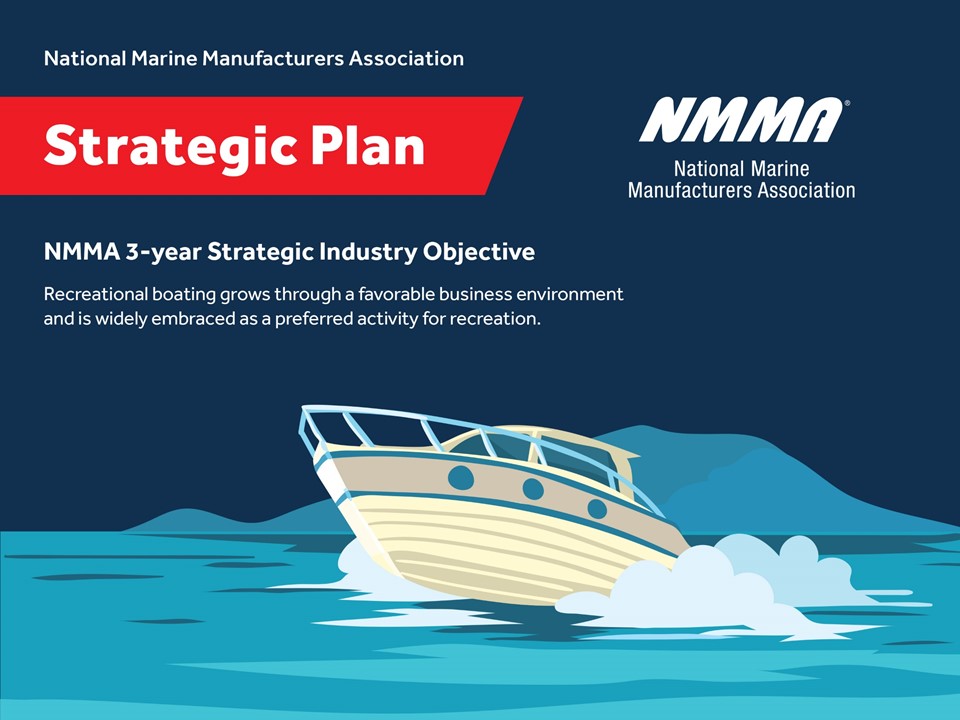
Further reinforcing the “NMMA is the Industry, we don’t exist apart” strategy, the Association built a bold positioning statement that demonstrates how impactful the organization intends to advance and grow the Industry over the next three years: “Recreational boating grows through a favorable business environment and is widely embraced as a preferred activity for recreation.”
On October 3, 2018, Robert Newsome, Senior Vice President, Strategy, Engineering Standards & Membership, Nicole Vasilaros, Senior Vice President of Government Relations and Legal Affairs, and Carl Blackwell, Senior VP, Marketing & Communications, and CMO, presented the proposed Strategic Industry Business Plan as approved by the Board Task Force to the Board of Directors.
The Board unanimously approved the plan and later approved funding to support the Strategic Initiatives over the next three years. In doing so, the board validated that when given the choice, Members hire Industry advocacy and promotion.
“While we weren’t surprised by the outcome, conducting the research allows us to better understand the impact and importance of NMMA’s existing programs and reaffirms our commitment in these areas,” said Speciale, president of Yamaha U.S. Marine Business Unit and chair of the NMMA Board of Directors. “The research also shined a light on opportunities that need additional investments within advocacy, keeping and attracting new boaters, and building a competent workforce. Over the next few years, the strategic plan will guide the association as it works to continue growing and protecting the industry while acting as a blueprint for the association’s leadership team.”
Members Hire Industry Advocacy and Promotion
Successful Associations are positioning themselves as “the Industry”. In doing so, they are building a symmetry for their organizations to serve as launching pads that consistently move the needle for an Industry and their members. This positioning is even more important today as economic cycles, political party control of the White House, the Congress, Governorships, and State Legislatures, can change as quickly as days in a week.
Association CEO’s who move in this direction will make their organizations more relevant and durable, and over time it will also unify the Industry that you represent. This strategic approach will likely energize member engagement and attract and retain members, too. In a time of increasing global economic and political uncertainty, no other approach could be more important for Association CEO’s and their senior management teams.
As his Association career comes full circle, Thom Dammrich’s overarching “NMMA is the Industry, we don’t exist apart” strategy reflects how organizations can thrive despite changes in political party control or economic cycles. It’s also a legacy and a valuable lesson for all current and aspiring Association CEO’s. Regardless of circumstances, Members hire Industry advocacy and promotion.
To learn more about how your organization can Leverage Industry Advocacy and Promotion click here.
Private Equity Hires Associations, Private Equity Fires Associations
The challenge for Association CEO’s is to understand how Private Equity Hires Associations, Private Equity Fires Associations. Simply put, the new Private Equity owners are not necessarily maintaining their Association memberships. Following the company purchase, new owners use concrete strategies that improve operations, products, revenues, and market position. Utilizing proactive and innovative strategies will determine whether or not Private Equity Hires Associations, Private Equity Fires Associations.
Private Equity Investment is Exploding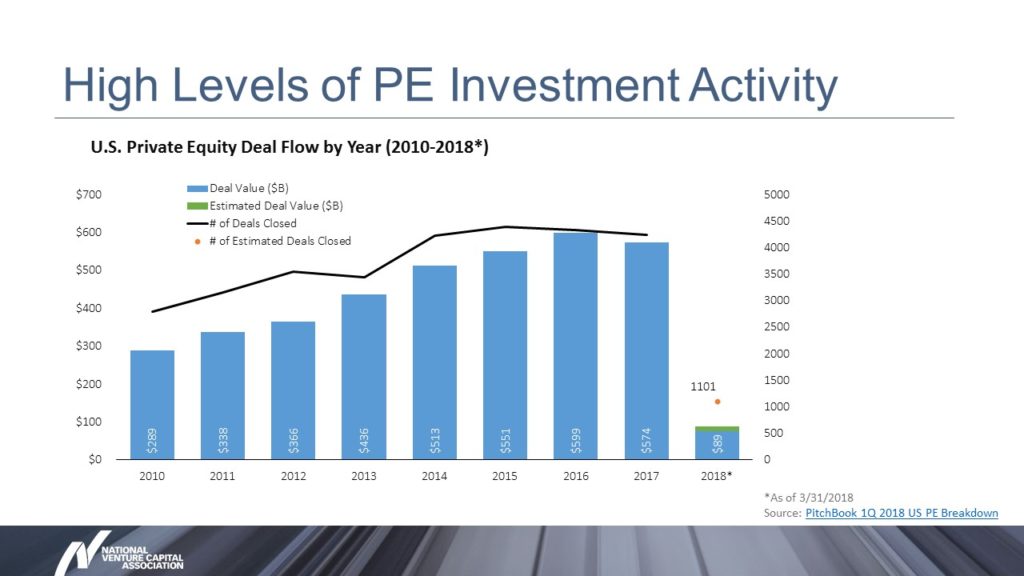
U.S. investment in Private Equity skyrocketed to $57 billion in the first quarter of 2018 alone. In 2017 there were 3,283 transactions in the United States,  totaling $511.66 billion. These numbers reflect a post great recession high. Associations who haven’t yet experienced membership losses yet should expect to see these challenges land at their front door soon. Bobby Franklin, President & CEO, National Venture Capital Association (NVCA) in Washington, DC indicates that PE has the resources it needs to continue acquiring companies. According to PitchBook 2017 Annual PE and VC Fundraising report, Private Equity funds have almost $1 trillion in dry powder (investment capital) and that could foretell more company acquisitions.
totaling $511.66 billion. These numbers reflect a post great recession high. Associations who haven’t yet experienced membership losses yet should expect to see these challenges land at their front door soon. Bobby Franklin, President & CEO, National Venture Capital Association (NVCA) in Washington, DC indicates that PE has the resources it needs to continue acquiring companies. According to PitchBook 2017 Annual PE and VC Fundraising report, Private Equity funds have almost $1 trillion in dry powder (investment capital) and that could foretell more company acquisitions.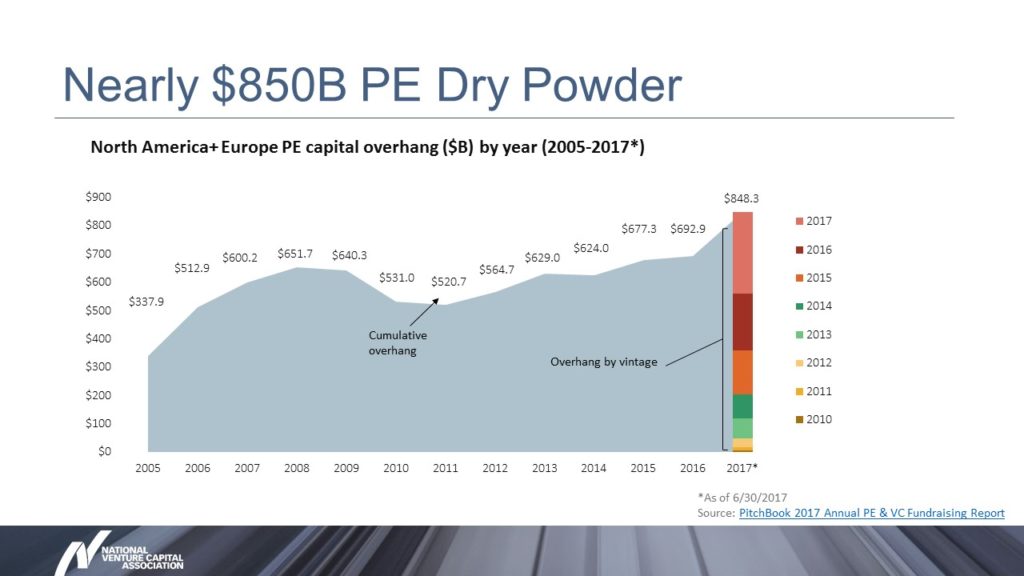
Private Equity Background and Their Objectives
 Understanding the threat is the critical first step for Associations, notes Steve Caldeira, President & CEO of the Washington, DC based Household & Commercial Products Association (HCPA). Earlier in his career, Caldeira worked firsthand with Private Equity while at Dunkin’ Brands (2007-2009). The company was purchased by three PE Funds; Bain Capital, The Carlyle Group, and Thomas H. Lee Partners. It has been reported that each of the firms profited approximately $600 million upon sale of the company. Caldeira notes that these firms have a clear vision once they purchase companies:
Understanding the threat is the critical first step for Associations, notes Steve Caldeira, President & CEO of the Washington, DC based Household & Commercial Products Association (HCPA). Earlier in his career, Caldeira worked firsthand with Private Equity while at Dunkin’ Brands (2007-2009). The company was purchased by three PE Funds; Bain Capital, The Carlyle Group, and Thomas H. Lee Partners. It has been reported that each of the firms profited approximately $600 million upon sale of the company. Caldeira notes that these firms have a clear vision once they purchase companies:
- Maximize return to its investors – Through due diligence and strategic rigor, they vastly improve the company’s operational performance and brand marketing to enable revenue growth and measurable profits to maximize its exit position.
- Exit – Selling the company to a different firm or company or even possibly cashing out through an Initial Public offering.
Having this background is the starting point for the understanding of how and why Private Equity Hires Associations, Private Equity Fires Associations.
Private Equity Hires Associations, Private Equity Fires Associations: PE Too Has a Value Imperative
Nowadays executives don’t join anything without a direct connection to helping them achieve business outcomes. Busy executives will find other ways including starting their own coalitions or launching their own Associations to create an environment more conducive to business success. Private Equity is in many ways similar. Keep in mind that the key differences that define the Private Equity approach are highly disciplined strategies combined with a well established success formula for their investors. Understanding these differences will help Associations why Private Equity Hires Associations, Private Equity Fires Associations.
Two Steps to Engage Private Equity Owners
Steve Caldeira faced the Private Equity challenges as an Association Executive at two leading Trade organizations: International Franchise Association and now at the Household & Commercial Products Association. Understanding the Private Equity mandate, Caldeira applied a two step process that bridged critical gaps through an understanding of differences to work toward common goals:
- Early Engagement – Meeting with the new Private Equity owners to understand the regulatory and tax impediments that keep them up at night. Then mapping these concerns to the Association’s federal and state advocacy teams.
- Volunteer Leadership – Inviting new owners to participate on the Board of Directors (with a potential pathway to the Officer level) or to participate in key Association committees. These opportunities help the new owners leverage the Association as an extension of their firm’s business strategy. They also create understanding (as well as business to business opportunities) for promoting dialogue between Private Equity owed companies and other members of the Association.
Organizations, in addition to the International Franchise and Household & Commercial Products Association, are utilizing the board leadership opportunity in similar ways, with many PE owned companies sitting on Association Boards. Associations with PE owned companies sitting on Boards include:
- American Hotel & Lodging Association (AHLA) (Caesars Entertainment, Hilton, La Quinta)
- National Retail Federation (NRF) (The Container Store, Macy’s)
- American Beverage Association (ABA) ( Pepper Snapple Group)
- American Frozen Food Institute (AFFI) (Pinnacle Foods)
These two approaches are effective strategies in so much as they are determining factors as to whether or not Private Equity Hires Associations, Private Equity Fires Associations.
Private Equity Owners Also Insist Upon Clarity and Deliverables
 Corey Rosenbusch, President & CEO, Global Cold Chain Alliance, Arlington, Virginia remains focused on the potential loss of dues and non-dues revenue as Private Equity companies consolidate memberships. Thanks to pro active strategies the Association has not lost a single private equity firm from membership when they entered the space. Moreover, each of these companies have stayed engaged after they were purchased.
Corey Rosenbusch, President & CEO, Global Cold Chain Alliance, Arlington, Virginia remains focused on the potential loss of dues and non-dues revenue as Private Equity companies consolidate memberships. Thanks to pro active strategies the Association has not lost a single private equity firm from membership when they entered the space. Moreover, each of these companies have stayed engaged after they were purchased.
GCCA is delivering impressive results for Private Equity owned companies and overall membership through the mitigation of costs of regulatory compliance. For example, members achieved a decrease in the number of violations and OSHA fines per inspection.
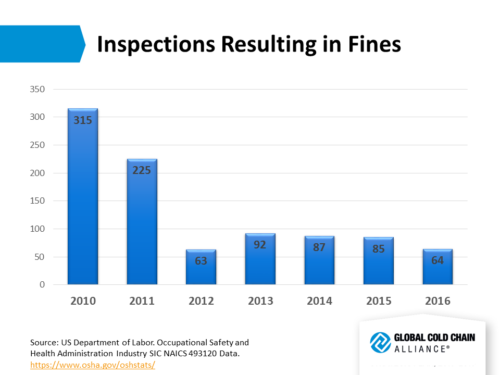
The Association also identified two other high ROI opportunities to support the new Private Equity owners with:
- Technical resources – Helping reduce costs.
- Talent development initiatives – Assisting with workforce challenges.
Rosenbusch notes “GCCA continually identifies new and innovative opportunities to maximize the ROI for the organization and for our Private Equity owned members.”
Private Equity Hires Associations, Private Equity Fires Associations
Make no mistake about it, Private Equity is increasingly becoming a force to be reckoned with for all Associations. The high volume of available capital and Private Equity investors hungry for strong returns means Association CEO’s must create opportunities to engage their new Private Equity owners. Not doing so is risky and could result in considerable erosion of the membership base. Utilizing proactive and innovative strategies are the best tools that will determine whether Private Equity Hires Associations, Private Equity Fires Associations.
To learn more about how your organization can effectively work with Private Equity click here.
Members Hire Bold Strategies
Members Hire Bold Strategies. Part of that boldness is how much their Industry Trade Association Strategic Plan reflects the challenges and business outcomes that members care most about. As busy executives are under constant pressure to meet and exceed profit targets, they expect the organizations they are part of to deliver bold strategies and results. If not, Members will vote with their feet and go somewhere else.
New Mantra: Members Hire Bold Strategies
Make no mistake about it, busy executives have choices about where to participate. If there is not a connection between what your Association does and what a member needs to achieve, they are gone, and possibly forever. For your organization to remain relevant, strategies and planning must be based on what bold actions your Association can take to influence the external environment where members conduct business. It’s no longer about what your Association needs to achieve, instead it’s about understanding what blocks your member’s progress and what clears a pathway for future success. Another reminder that Members Hire Bold Strategies.
Every Industry Faces Tough Challenges
The nature of a global and dynamic marketplace means that every Industry faces more than its fair share of challenges and growth opportunities. What’s different today is how the business environment is increasingly more complicated. Economic uncertainty, disruptive innovation, & political gridlock can sometimes be the strategic equivalent to a toxic “triple cocktail.” Today’s Association Boards are seizing a new moment and utilizing their Strategic Planning process to position the Industry Trade Association to help their Industry do blocking and tackling in a very meaningful way.
One recent example is the Washington, DC based American Bakers Association (ABA). Following the great recession of 2008, the Wholesale Baking Industry faced an onslaught of regulation, increasing costs, worker shortages, changing consumer tastes, and online competition. In March of 2017, a Task Force comprised of the Board of Directors and Staff Leadership launched a Strategic Planning process. From the start, the process focused on how to best align ABA with the Baking Industry to support its ongoing growth and success.
Industry Engagement and Survey Research
Since Members Hire Bold Strategies, ABA took a different pathway to update its Strategic Plan. Instead of utilizing an Association focused Strategic Planning process and member satisfaction focused research, ABA leveraged in-depth survey research and interviews of the baking Industry. Their focus was to get a clear picture on the challenges facing their members and align the organization with the business success that the Industry wants to achieve.
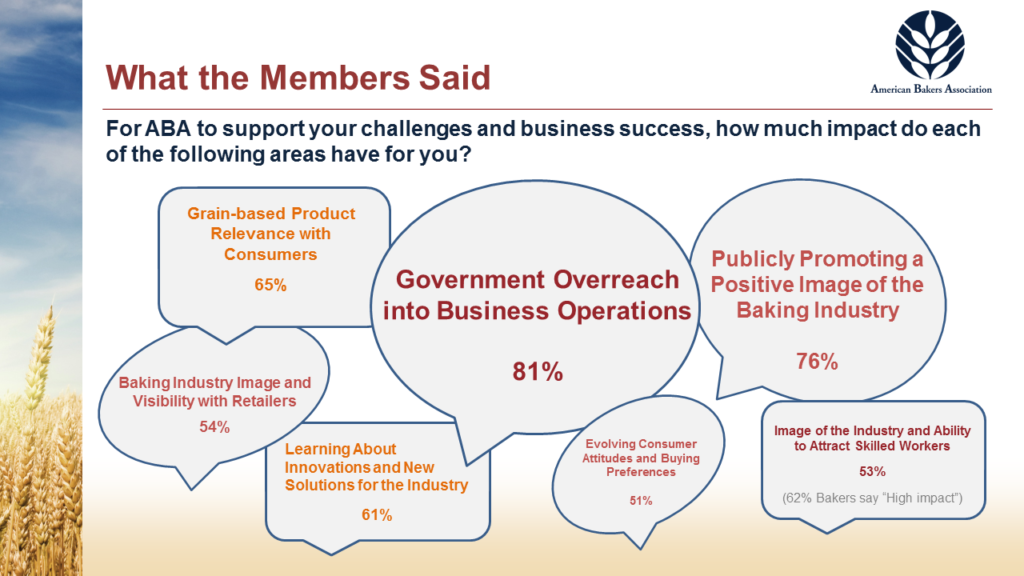
The process was driven through a collaborative effort of a Board Task Force and a Staff Leadership Team. Throughout, Industry leaders thoughtfully and strategically guided the process to the clear outcomes they want ABA to address:
- Industry growth and promotion to protect it from government overreach
- Advancement of careers to improve worker retention
- Attraction of skilled talent to contribute to Industry growth
 What do these clear outcomes really help drive? For an Industry facing tough challenges they have an ally to help them create a more receptive environment to grow the Baking Industry. Robb MacKie, President & CEO and his Team are energized with the new Strategic Plan and the Industry’s support to execute their new plan. “Thanks to the strong plan the members have created, ABA will be better aligned with the business success of the Baking Industry. ABA is the voice for the Industry and that voice will now be even more effective.”
What do these clear outcomes really help drive? For an Industry facing tough challenges they have an ally to help them create a more receptive environment to grow the Baking Industry. Robb MacKie, President & CEO and his Team are energized with the new Strategic Plan and the Industry’s support to execute their new plan. “Thanks to the strong plan the members have created, ABA will be better aligned with the business success of the Baking Industry. ABA is the voice for the Industry and that voice will now be even more effective.”
Association Mission and Vision in the Rear View Mirror
Association relevance isn’t about the organization any longer. It’s about the Industry or the Profession that is represented by the Association. Instead of an Association Mission & Vision Statement, it’s a Strategic Objective. A Strategic Objective is all about what the Industry will have achieved because of the Association’s Strategic Plan. Yes, it must be a bold statement because Members Hire Bold Strategies. For ABA, it’s means highlighting the far-reaching and positive impact the Baking Industry has in the United States:
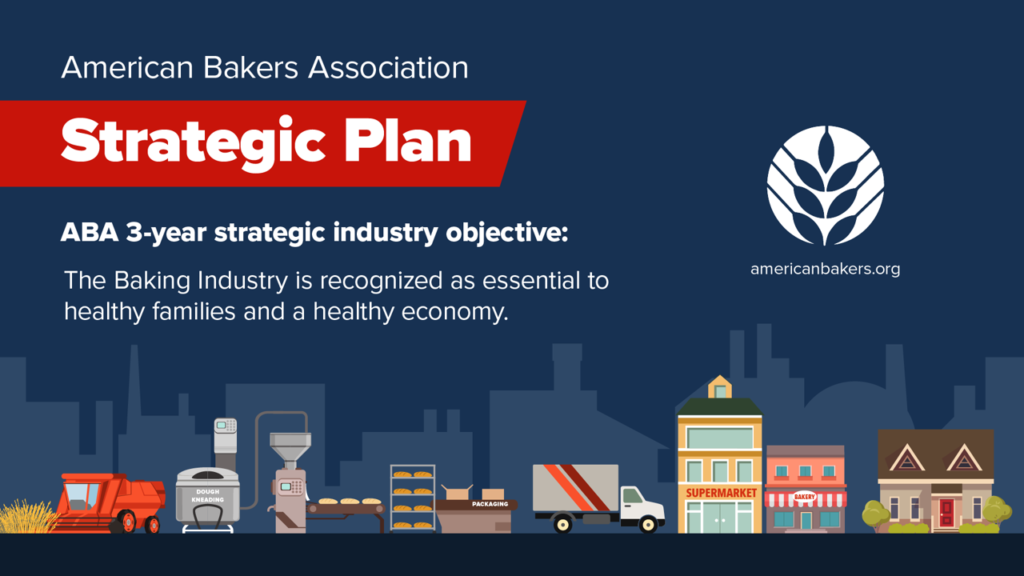
Actionable and Industry Focused Strategic Initiatives
Utilizing Survey Research and Strategic guidance from a Board Task Force, ABA’s Staff Leadership Team formulated initiatives and activities that pinpoint what the Baking Industry seeks to achieve.
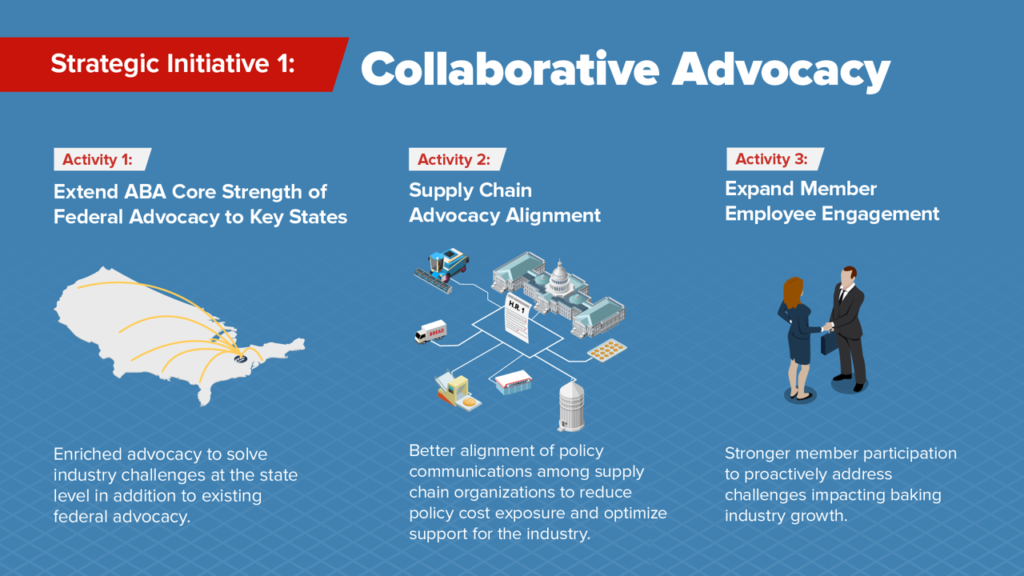
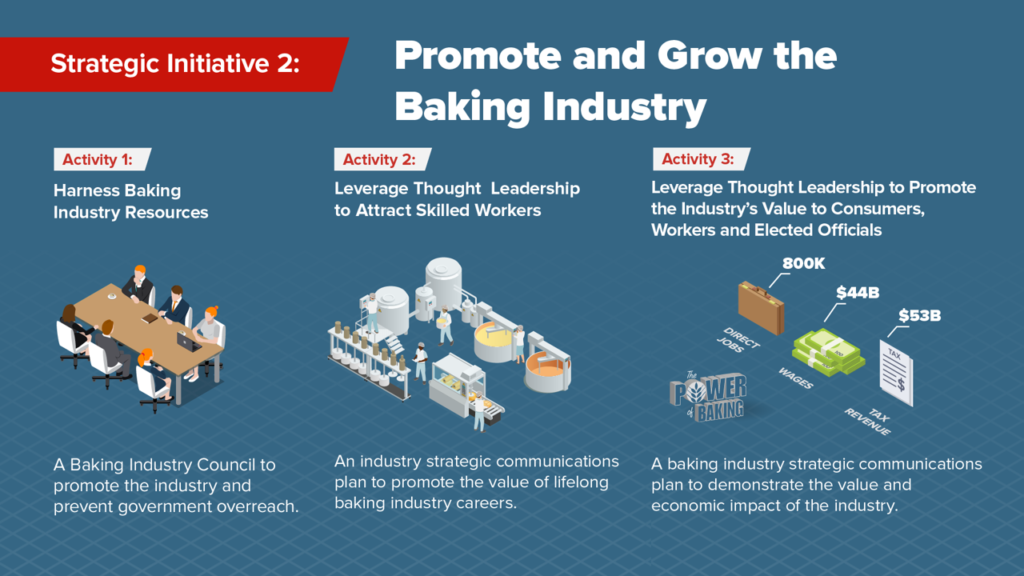
As part of its due diligence, ABA also conducted an evaluation and assessment planning process to ensure that the organization is best positioned to address & solve Industry problems for the members:
- Sunsetting process to identify their non core products
- Readiness Assessment on existing & new core products
The initial phase of the Strategic Plan was approved by the Board of Directors on April 15, 2018 and presented by the Board Task Force to an all Membership Meeting at the Annual Convention in Scottsdale, Arizona. The Staff Leadership team will finalize Metrics to measure new product & service impact on Industry Business & Growth Challenges and report the plan’s progress on an annual basis to the Board Strategic Planning Task Force. Reflecting on a year long Industry Focused Strategic Planning Process, ABA Immediate Past Chair Fred Penny said “This plan is a product of the ABA membership. We could not have done this without the candid feedback and guidance of our member leaders.”

Members Hire Bold Strategies
No one knows when the next economic recession will occur. Yet what remains clear is that economic uncertainty, disruptive innovation, & political gridlock will continue to force Industry and Professional Associations to demonstrate relevance. Understanding why Members Hire Associations, & why they Fire Associations are the threshold questions that every Association CEO must answer. Once they’ve done that, they will understand that from now on Members Hire Only Bold Strategies.
To learn more about how your Association can develop and implement Bold Strategies click here.
Members Hire Customized Advocacy
Members hire Customized Advocacy because they have no choice. They face turmoil driven by ever increasing new technologies, evolving consumer preferences, and political polarization. What’s more member companies are facing increasing demands for transparency from their board members, shareholders, and also from their consumers. Associations who customize their advocacy strategies will remain relevant. Those who don’t will falter.
Association Boards insist that their CEO’s are as nimble and focused on the marketplace as they are. Members hire Customized Advocacy because of the dynamic nature of the business environment and they need results in real time. Your organization’s ability to creatively and rapidly respond to new and emerging challenges through Customized Advocacy is what your members expect.
The magnitude of advocacy challenges spread far beyond the confines of the Washington, DC Beltway. In industries ranging from Food to Consumer Products, Associations are regularly challenged with legislative and regulatory activities at the Federal, State, and local government levels. Building timely and Customized Advocacy to respond rapidly is essential.
Associations will need ongoing connectivity with Board Leaders in strategic discussions about current and emerging Industry challenges. It also requires ongoing member interaction, and Industry focused research to develop and implement Customized Advocacy strategies.
NATIONAL MARINE MANUFACTURERS ASSOCIATION
NMMA represents boat, marine engine and accessory manufacturers, its members manufacture an estimated 80 percent of marine products used in North America.
Reflecting the Industry’s desire to continually maximize its Advocacy efforts, Thom Dammrich, President & CEO, NMMA continually seeks opportunities to utilize Customized Advocacy to maximize business impact for the Marine Industry. Part of NMMA’s Customized Advocacy focus is building, leading, and participating in coalitions to advocate and promote the Industry.
 Nowadays the most impactful resource that an Industry has is the data it utilizes to make its case with Legislators and Regulators. Where Industry numbers are presented in these conversations, it could have more impact if numbers were reflected in data released by the Federal Government. Recognizing this, the Outdoor Recreation Roundtable, a coalition of twenty one outdoor recreation trade associations that includes the National Marine Manufacturers Association, the Outdoor Industry Association, and the Motorcycle Industry Council galvanized their efforts. Their focus was to have Outdoor Recreation recognized by the Federal Bureau of Economic Analysis:
Nowadays the most impactful resource that an Industry has is the data it utilizes to make its case with Legislators and Regulators. Where Industry numbers are presented in these conversations, it could have more impact if numbers were reflected in data released by the Federal Government. Recognizing this, the Outdoor Recreation Roundtable, a coalition of twenty one outdoor recreation trade associations that includes the National Marine Manufacturers Association, the Outdoor Industry Association, and the Motorcycle Industry Council galvanized their efforts. Their focus was to have Outdoor Recreation recognized by the Federal Bureau of Economic Analysis:
- Legislation was introduced and later enacted into law by President Obama in 2016.
- The new law directed the Bureau of Economic Analysis to develop a measurement of the outdoor economy in the same way that it tabulates other Industries and the overall economy.
- The Outdoor Industry Association updates its estimate of the Outdoor Recreation Economy in 2017.On February 14, 2018, the U.S. Department of Commerce’s Bureau of Economic Analysis (BEA) released a report showing that the outdoor recreation economy accounted for 2.0 percent or $373.7 billion of current-dollar GDP in 2016.
 Thom Dammrich celebrated the Industry’s Customized Advocacy success, “As an industry, we are proud to generate millions of American jobs and be a driving economic force from coast to coast, and we are grateful that the BEA and the Department of Commerce have decided to recognize that.”
Thom Dammrich celebrated the Industry’s Customized Advocacy success, “As an industry, we are proud to generate millions of American jobs and be a driving economic force from coast to coast, and we are grateful that the BEA and the Department of Commerce have decided to recognize that.”
NMMA regularly conducts Industry research and is in the midst of a Strategic Industry Business Planning Process.
HOUSEHOLD & COMMERCIAL PRODUCTS ASSOCIATION
HCPA is a Trade Association that advocates for companies that make and sell $180 billion annually of products used for cleaning, protecting, maintaining, and disinfecting in homes and commercial environments. Association members employ 200,000 people in the U.S.
Since joining HCPA as its new President & CEO in January 2017, Steve Caldeira and his team continually communicate with their Board and members to stay connected to evolving member challenges and opportunities.
Their Customized Advocacy strategy incorporates Board direction for:
- Collaboration with Supply Chain-related Trade Associations to maximize the Industry’s business impact.
- Communication and responsiveness on increasing consumer transparency concerns with NGOs (non-governmental organizations) and retailers who sell products.
- Scientific Research to highlight and validate the Industry’s critical role in developing environmentally safe products for consumers.
 The HCPA Customized Advocacy model delivered an important win through the passage and enactment of California’s Cleaning Product Right to Know Act in 2017. Environmental and public health groups believe that consumers and workers need to know a lot more about the cleaning products in their kitchens, bathrooms and work spaces. Product manufacturers want labels that educate their customers without alarming them or providing details so minute that they obscure serious concerns about human health.
The HCPA Customized Advocacy model delivered an important win through the passage and enactment of California’s Cleaning Product Right to Know Act in 2017. Environmental and public health groups believe that consumers and workers need to know a lot more about the cleaning products in their kitchens, bathrooms and work spaces. Product manufacturers want labels that educate their customers without alarming them or providing details so minute that they obscure serious concerns about human health.
The balanced solution that California lawmakers devised allows consumers and workers to see the facts they really need to know, because the labeling focuses on important ingredients, such as those that have been linked to various health concerns. The California law, was backed by more than 100 environmental and public health groups, including the Natural Resources Defense Council, Breast Cancer Prevention Partners, Women’s Voices for the Earth and the Environmental Working Group, as well as cleaning product giants such as ECOLAB, Procter & Gamble, Reckitt Benckiser, and SC Johnson. Both sides compromised after numerous meetings; a clear sign of a successful negotiation.
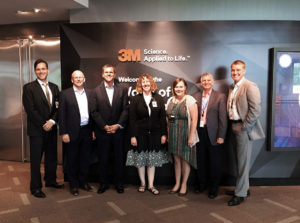 Reflecting upon the Industry’s Customized Advocacy success, Steve Caldeira notes that “our industry will always be open to collaboration with a diverse group of stakeholders to successfully address our member’s interests.”
Reflecting upon the Industry’s Customized Advocacy success, Steve Caldeira notes that “our industry will always be open to collaboration with a diverse group of stakeholders to successfully address our member’s interests.”
How Associations Build Their Own Customized Advocacy Strategies
Associations can develop Customized Advocacy through ongoing interaction with boards and members. What drives successful Customized Advocacy is a steady flow of communication and collaboration to help define the challenges and the business impact that the Industry is seeking:
- Stay connected through a systematic approach to annual data collection through interviews and Industry (or Profession focused) survey research.
- Utilize research to focus Board meeting discussions on Industry challenges and then deliver Customized Advocacy that adds business impact to the members.
- Learn about member challenges firsthand. Whenever possible meet with members face to face.
- Continually measure and assess business impact.
Each step will maximize the alignment between the Association and your members. Moreover, your organization will continually add business impact to members because of the Customized Advocacy strategies that you develop.
Members Hire Customized Advocacy
Despite strong growth forecasts member company CEO’s have a less robust view after 2018. From now on member companies will seek out those Associations that deliver business impact. Customized Advocacy helps position Associations as the valuable ally that members need to navigate the complex business landscape.
Organizations such as NMMA and HCPA are perceived as extensions of business and marketing strategies by their members and deservedly so. They demonstrate how important it is for today’s Association to help navigate and advance Industries through an ongoing era of disruption and turmoil. In doing so these organizations will increase their business impact and their relevance because of their Customized Advocacy focus.
Yes, it’s important to remember in 2018 that Members Hire Associations and Members Fire Associations. It’s just as important to recognize that from now on Members will especially hire Associations that deliver Customized Advocacy.
To learn more about how your Association can implement Customized Advocacy click here.
Members Hire Associations, Members Fire Associations
Members hire Associations, Members fire Associations is what the new mantra will be for Association Executives in 2018. The evolving external environment is continually redefining how member executives assess the impact of their memberships. At year end 2017, Association Executives would find it useful to see the world as their members do and understand what help they need to make progress in their Industry or Profession. While economists forecast a brighter global growth picture, your members still face a myriad of uncertainty. Cyber & nuclear threats, disruptive innovation, and increasing competition for market share will continue to reshape how members view their memberships. This means organizations will require new and different external research to understand what tools they must provide in order to help their members make progress.
Members Hire Associations, Members Fire Associations
Since the end of the great recession, Boards are helping their Associations see the world as they see it. Pushing an all you can eat buffet as your value proposition is now the dark ages. Even connectivity to business and professional challenges and providing immediate solutions represent a smaller fraction of evolving member expectations. In other words, if your Association is not perceived as a vehicle to help drive progress for your members and prospective members then your organization:
- Will likely be fired by your members.
- Will not be hired by your prospective members.
In 2018 the new mantra will be: Members hire Associations, Members fire Associations.
Research Keeps Associations Connected to Member Problems that Need to Be Solved
For organizational CEO’s embracing the new marketplace that Members hire Associations, Members fire Associations you’ve taken an important first step. As Boards insist upon more operational rigor at their Associations, they are turning to externally focused and segmented research. This data is playing an increasingly important role in strategic planning and product development. In several cases, Association CEO’s are assessing strategies, products, & services as for profit executives do at global enterprises.
The National Association of Independent Schools
NAIS is a nonprofit membership association that provides services to more than 1,800 schools and associations of schools in the United States and abroad, including more than 1,500 independent private K-12 schools in the U.S.
 As the new NAIS President, Donna Orem, her Board, and her team set out to build a segmented research study to profile the market of Private Schools. Their research identified four segments in their marketplace. What they learned was how each segment differs in terms of goals they hope to achieve, professional needs, and demographic characteristics. While each segment presented different implications, NAIS leveraged Board guidance and took to address the differences in each member segment. This work only took them so far, however. After learning from a board member about the Jobs To Be Done framework, the board and leadership team agreed that this approach, which explores what causes someone to hire or fire a product or service, could provide even more actionable insights.
As the new NAIS President, Donna Orem, her Board, and her team set out to build a segmented research study to profile the market of Private Schools. Their research identified four segments in their marketplace. What they learned was how each segment differs in terms of goals they hope to achieve, professional needs, and demographic characteristics. While each segment presented different implications, NAIS leveraged Board guidance and took to address the differences in each member segment. This work only took them so far, however. After learning from a board member about the Jobs To Be Done framework, the board and leadership team agreed that this approach, which explores what causes someone to hire or fire a product or service, could provide even more actionable insights.
“Jobs to Be Done” Approach
Harvard Professor Clayton M. Christiansen has researched what makes businesses successful in his over twenty years of teaching at Harvard Business School. He is most well known for creating the theory of Disruptive Innovation. He put forth the “Jobs To Be Done” Approach in his recent book Competing Against Luck. The underlying premise is that in today’s marketplace “people no longer buy products or services. Instead they hire them to make progress.” The NAIS team utilized this approach to develop value propositions that addressed the struggles that heads of schools and administrators face and to understand how those struggles change as they progress through their careers.
The process changed the way the organization and the Board develops and delivers value to their members, and redefined how the Association thinks from strategy through implementation.
NAIS is already utilizing their newly minted strategies to retain and acquire new members and accordingly Donna Orem notes, “We found the JTBD work to be transformational.”
Club Managers Association of America
The Club Managers Association of America (CMAA) is the professional Association for managers of membership clubs. CMAA has close to 6,700 members across all classifications.
 For Jeff Morgan & his team, it’s imperative to have a business minded research systematic approach in product management and strategy. They utilize approaches developed management consulting firms including the Boston Consulting Group, McKinsey, Ansoff, and Blue Ocean Strategy. Their assessment process helps the CMAA team reach a “problems to be solved” determination on each of their products:
For Jeff Morgan & his team, it’s imperative to have a business minded research systematic approach in product management and strategy. They utilize approaches developed management consulting firms including the Boston Consulting Group, McKinsey, Ansoff, and Blue Ocean Strategy. Their assessment process helps the CMAA team reach a “problems to be solved” determination on each of their products:
- Ensure the Association is serving its members (Mission)
- Make better (supportable) strategic decisions
- Help to prune portfolio of products to make room for new ones
- Improve internal resource allocation
- Product-lifecycle focus
- Strategy alignment (internally/externally)
These steps have helped CMAA deliver increased strategic and operational rigor to their product management approaches. The process has been “an integral part of how the organization delivers increasing value to Club Management Professionals at each stage of their careers.”
American Bakers Association
The American Bakers Association (ABA) is the Washington D.C. based voice of the wholesale baking industry. ABA represents the interests of bakers before the U.S. Congress, federal agencies, and international regulatory authorities. ABA advocates on behalf of more than 1,000 baking facilities and baking company suppliers.
 Robb MacKie, President & CEO sees the Baking Industry experiencing unprecedented disruption and evolving consumer attitudes. Determined to identify a “problems to be solved approach,” they launched a research based strategic planning process. What’s different about it is how the process is geared toward an external perspective of business challenges and how ABA could accelerate its impact on all segments of the Baking Industry. The Association also seeks to determine how they can continually increase their alignment with the Industry they serve.
Robb MacKie, President & CEO sees the Baking Industry experiencing unprecedented disruption and evolving consumer attitudes. Determined to identify a “problems to be solved approach,” they launched a research based strategic planning process. What’s different about it is how the process is geared toward an external perspective of business challenges and how ABA could accelerate its impact on all segments of the Baking Industry. The Association also seeks to determine how they can continually increase their alignment with the Industry they serve.
Similar to NAIS and CMAA, ABA’s business focus is drawn partially from leading business authors including Chris Zook, “Profit From The Core. Growth Strategy In An Era of Turbulence.” Through this process Robb Mackie, the Board, and the Senior Team have surfaced & identified the core challenges and problems to be solved for the Industry today. Their focus is to build a new and more nimble strategy that continually aligns ABA with the Baking Industry.
Part of ABA’s Operational Rigor includes an evaluation and assessment planning process to ensure that the organization is best positioned to address & solve Industry problems for the members:
- Sunsetting process to identify their noncore products
- Operational Readiness Assessment on existing & New Core Products
- Developing Metrics to measure new product & service impact on Industry Business & Growth Challenges
Because of externally focused and segmented research, NAIS, CMAA, and ABA have greater understanding into what’s next for Associations, Members Hire Associations, Members Fire Associations.
Ongoing Alignment Test: Members Hire Associations, Members Fire Associations
Part of the next evolution of Association strategic planning and product development is how externally focused and segmented research is driving strategy and implementation to help members solve their problems.
 Earlier this year, NPES launched an ambitious strategic plan to align and grow the global printing and imaging Industry. As part of its strategic overhaul Thayer Long, President, is focusing the organization to more quickly and readily adapt to emerging Industry challenges. He sees ongoing research as necessary to maintain ongoing alignment with the members. Through ongoing research NPES is increasing its understanding of why members hire/fire Associations. For example, the Association now:
Earlier this year, NPES launched an ambitious strategic plan to align and grow the global printing and imaging Industry. As part of its strategic overhaul Thayer Long, President, is focusing the organization to more quickly and readily adapt to emerging Industry challenges. He sees ongoing research as necessary to maintain ongoing alignment with the members. Through ongoing research NPES is increasing its understanding of why members hire/fire Associations. For example, the Association now:
- Maintains an Alignment dashboard focused on Industry performance.
- Conducts an annual Industry Alignment survey research to measure its impact on the problems that need to be solved.
Having this additional research will help NPES and other organizations who are embracing the new reality: Members hire Associations, Members fire Associations.
Members Hire Associations, Members Fire Associations
Strategic planning and product development are rapidly changing. These are not just one time exercises. Instead, its ongoing research that will continually help to identify member problems that need to be solved. It’s more comprehensive and it requires drilling down through segmented qualitative and quantitative research to surface the member problems that need to be solved. This is a four step process that will position Associations to drive ongoing progress for its members:
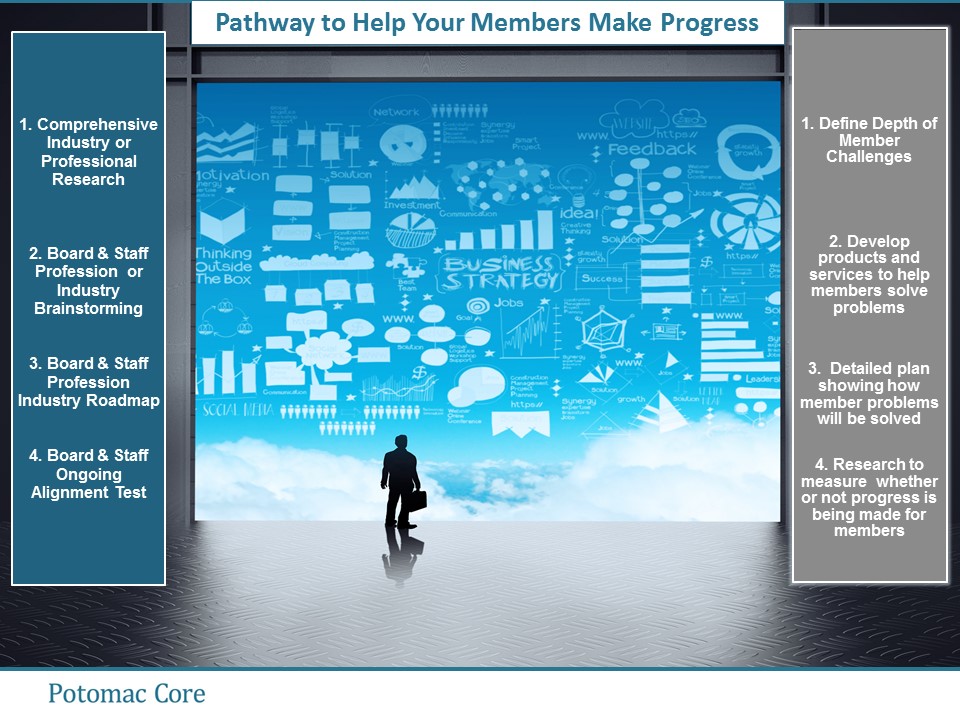
As the curtain rises in 2018 the new reality is Members hire Associations, Members fire Associations. Adjusting to the new reality requires externally focused and segmented research that helps your organization understand what help members need in order to make progress. Welcome to 2018: Members hire Associations, Members fire Associations.
To learn more about how your Association can build a potent pathway to progress click here.
Association Supply Chain Advocacy
Association Supply Chain Advocacy can be a game changer for members. By uniting the Supply Chain through Associations members can better influence the destiny of their company and their Industry in ways they could not do on their own. Getting and bringing an entire Supply Chain to the table at an Association is a heavy lift but the long term impact will make the effort yield substantial member ROI.
Association Supply Chain Advocacy is Fueled by Actionable Research
Organizing a robust data collection process that includes Associations in the Supply Chain will build actionable information. Having this research will create proactive opportunities to build a collaborative Association Supply Chain Engagement Strategy with Board, Senior Staff, and other Associations from the Supply Chain that includes:
- Comprehensive Industry Research – Supply Chain Interviews and survey research including segmented business challenges and growth opportunities.
- Industry Brainstorming – Creating new and unique activities for the Supply Chain to collaborate and create a growth focused business environment.
- Industry Planning & Roadmap – Highly focused and measurable activities that are continually evaluated by the Industry Supply Chain.
These steps build a plan that identifies the role that each Association in the Supply Chain plays in carrying out its Advocacy Strategy. Instead of a competing with each other, Associations transform into Supply Chain collaborators. In this scenario each Association in the supply chain has clearly established roles, deliverables, and accountability for Industry Advocacy outcomes.
Association Supply Chain Advocacy Equals More Concentrated Effort to Mitigate Emerging Industry Challenges
In a dynamic global economy, new impediments and opportunities will continually surface. Having an Association Supply Chain Advocacy Strategy positions Industries to more quickly and effectively respond. For example, threats in States and in local government are an increasing part of Advocacy strategies. Bringing the impact of an Industry with an Association Supply Chain accelerates response time and improves chances of success.
Recently, the Soft Drink Industry faced an onslaught of proposed Soda Taxes in Santa Fe, New Mexico and in Cook County, Illinois. An impressive advocacy strategy by the American Beverage Association helped the Industry beat back local efforts to impose new taxes that would have been harmful. Unfortunately, this is just a beginning as warning signs point to an increasing amount of challenges from State and Local government. If Associations have members who manufacture and sell products in global markets, then they too will face regulatory and product standards challenges.
Association Supply Chain Advocacy Means Doing Fewer Things Exceptionally Well
As Boards define future success measurements for Associations, it’s a safe bet that they will want fewer activities that require less time and money. Operating margins are a continual focus for Executives and demonstrating increasing levels of efficiency is something they expect. Since Advocacy is a core component of Associations (especially Trade Associations), this integrated approach will be well received. This likely means doing fewer things exceptionally well because your Association may eliminate activities not connected to the Advocacy core.
Association Supply Chain Advocacy is Already Underway
Associations are delivering direct returns on Supply Chain Advocacy through highly focused Advocacy activities:
American Bakers Association – Through the Grain Chain the ABA utilizes direct Industry engagement to surface and address regulatory and legislative matters that add costs to the Baking Industry. The Association published an annual ROI report to highlight their Supply Chain Advocacy.
Jewelers of America – Working through the Industry Supply Chain, JA positions its advocacy to work to continually assess risk and maintain consumer confidence. The Board and the members view the Association as their vehicle to drive results that support their business outcomes.
National Marine Manufacturers Association – The Association effectively utilizes an impressive supply chain advocacy approach to continuously help the Recreational Boating industry keep costs in line.
Global Cold Chain Alliance – Through its Strategic Planning process the Board asked GCCA to play a role in reducing the costs of regulatory compliance. The organization has forged relationships with regulatory agencies that have led in some situations to lower costs of compliance.
NPES – Advocacy is one of the key vehicles connecting global print equipment manufacturers and suppliers with its customers. Through an external working group, NPES is linking all aspects of the Industry Supply Chain to help the Industry impact its business challenges and outcomes.
Association Supply Chain Advocacy
Eliminating competitive boundaries between Associations in the Supply Chain helps Industries address emerging threats from Federal, State, and Local Government through a heavily concentrated Advocacy Strategy. What’s more this strategic approach helps Associations increase their relevance by accelerating Industry impact in the marketplace. As Board Leaders seek greater efficiency and solutions to their business challenges, they expect all organizations to work together for the good of the Industry. Meeting this new reality is a hand and glove strategy for Associations who want to energize member engagement and increase Advocacy Impact for their members. This could be the dawn of Member Engagement 3.0.
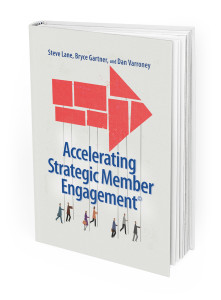 Click here to receive your free eBook “Accelerating Strategic Member Engagement”
Click here to receive your free eBook “Accelerating Strategic Member Engagement”












